- 2017 to date

Circuit Overview
Interlagos is something of a throwback circuit, built in the 1940s and updated just enough over the years to satisfy the demands of Formula One without destroying its essential character.
Drivers and spectators love it, though with its historically primitive paddock facilities, teams have been more lukewarm. Quite how Interlagos retained its F1 spot is something of a mystery when you consider the pillorying Silverstone took from Bernie Ecclestone to update its facilities, but with various alternatives failing to happen, it clings on for now, happily with much improved facilities.
Today the track boasts a full calendar of events at national level, as well as F1. Stock Car Brasil and Copa Truck are seasonal highlights on four wheels, with SuperBike Brasil providing the best of the two-wheel action.

Circuit History
The circuit's history began in 1926, when a real state company led by British entrepreneur Louis Romero Sanson began designing a new suburban area as part of the expansion of São Paulo. Known as 'Balneário Satélite da Capital', the project envisaged the creation of housing, large roads, and a multi-sport complex located in between the two enormous reservoirs which supply the city with drinking water.
After hiring Alfred Agache, a French urban planner who had been responsible for a redevelopment scheme in Rio de Janeiro, the proposals acquired their new name; Agache thought that the site reminded him of Interlaken in Switzerland, and thus Interlagos (meaning 'between lakes' in Portuguese) was adopted.
The stock market crash of 1929, combined with years of political turmoil within Brazil, ultimately put paid to most of these plans, including those of the motor racing circuit within the sports complex. Nevertheless, Brazilian racing continued, with street races arranged in both Rio and São Paulo. It was at the latter of these events that disaster struck: French pilot Hellé-Nice lost control of her Alfa Romeo at the end of the race and hit nearby spectators. The accident resulted in 4 people dead and another 37 injured.
A permanent circuit is needed
Racing clearly needed a safer environment to continue in and the president of the Automobile Club of Brazil, Eusébio de Queiroz Mattozo, urged Sanson to complete the Interlagos circuit. Sanson began researching circuit design, taking inspiration from Roosevelt Raceway in the U.S.A.; Brooklands in Great Britain; and Montlhéry in France.
Construction began in 1938 and the track was paved the following year. A lack of funds meant that facilities were very basic at the planned original opening; the grandstands and pit facilities would have to wait for many years before being complete, but the track itself was ready for racing. Unfortunately, the weather gods were not so welcoming and the original inauguration in November 1939 had to be postponed to the following year.
So it was that a grid of cars lined up on 12 May 1940 for the the 3rd Grand Prix of the City of São Paulo. Motorcycle races helped make up the undercard. The drivers and riders found a fast but technical circuit which wound its way back and forth between the lakes and across the contours of the land. Despite the basic facilities, around 15,000 people came out to watch those races in Brazil's first circuit. The Grand Prix was won by Brazilian driver Nascimento Junior in an Alfa Romeo, followed by fellow Brazilians Chico Landi (Maserati) and Geraldo Avellar (Alfa Romeo).
Racing continued at a national level throughout the 1940s and, by 1947, Interlagos was ready to host its first international race, an event for Grand Prix cars. Sanson's company managed the circuit until 1954, when it was sold to the City of São Paulo for a symbolic price.
In 1957, a link road was built to connect the Turn 4 and Junção corners to form an outer speed ring; essentially an oddly-shaped oval course. The original circuit remained unchanged by these alterations.
Formula One comes calling
At the end of 1967, the circuit was closed for extensive renovations to bring it up to contemporary safety standards, reopening on 1 March 1970. The pit area was moved further down the course, allowing for a much enlarged paddock area and better garage facilities. Elsewhere, the circuit had been widened and resurfaced, with safety barriers around its perimeter. Advice was sought from the managements of tracks such as the modern Buenos Aires Autodrome, Monza and the Nürburgring during the renovations, while Wilson Fittipaldi was also involved.
Further improvements came in 1971, with the ambition of securing a Formula One race to help showcase Brazil's new racing talent. The dream came true a year later, albeit in non-championship form, with Argentine driver Carlos Reutemann wining the race, followed home by Swede Ronnie Peterson and Brazilian Wilson Fittipaldi.
The event's success contributed to the inclusion of the race in the FIA Formula One World Championship. The first official race took place on 11 February 1973 and the enormous home crowds cheered home Emerson Fittipaldi to the win, followed by Scot Jackie Stewart and New Zealander Dennis Hulme.
Interlagos continued to host F1 throughout the 1970s, usually as one of the season opening races. But by 1980, drivers had begun to question the general safety at the venue, particularly becoming concerned with the bumpiness of the track in several places (no doubt exacerbated by the rock-solid suspensions employed on ground-effect era cars). The City Council was reluctant to provide the necessary investment to solve these issues and Rio thus snatched the race away for its new Jacarepaguá circuit.
During this phase, Interlagos went through a series of small-scale renovations and staged a series of national championship races, gradually fading from the international scene. In 1985, the circuit was renamed the Autódromo José Carlos Pace in memory of the 1976 GP winner, who had been killed in a plane crash just over a year later.
Major changes see Interlagos snatch F1 back
Changing requirements for F1 venues provided Interlagos with a second chance at F1, when Rio could no longer afford to keep the event. The Mayor of São Paulo, Luiza Erundina, joined forces with the President of the Brazilian Confederation of Motor Sports (CBA), Piero Gancia, to bring the F1 Grand Prix back to São Paulo from 1990.
In preparation, Interlagos underwent a series of renovations, with the construction of new garages and a race control tower, and the track itself was reduced considerably, complying with the new trend for shorter circuits. A new first turn bypassed the old banked corner, plunging downhill and connecting with the old circuit at Curva do Sol and heading in the opposite direction to previously. From there it reached a revised and tightened corner between the lakes, before heading back up the hill and rejoining the original infield and the climb back to the pits.
Alain Prost won the inaugural race back at Interlagos, but local hero Ayrton Senna took the wins in 1991 and 1993.
A variety of improvements occurred over the years, including the construction of a chicane on the run up to the pit straight in anticipation of the arrival of the Motorcycle Grand Prix in 1992. Riders were not taken with the circuit, finding it far too bumpy, and the race never returned.
The pit entry and exit was modified in 1996 and again in 1999, while a total resurfacing was undertaken in 2007. To facilitate the work, the circuit was closed and no events were held in the five months immediately preceding the Grand Prix.
Stock Cars endure some chicanery
Following two fatal crashes which took the lives of Stock Car Brasil drivers Rafael Sperafico in 2007 and Gustavo Sondermann in 2011, the chicane was revived for the Stock Cars, to slow speeds ahead of the Curva do Café corner (an unofficial name which had come into general use, said to be due to having enough time to get yourself a cup of coffee between seeing cars pass by each lap on the original, lengthy course). The 1992 layout was slightly revised but contractors actually built the modifications the wrong way round, leading to a tighter exit than entry, meaning it sat unused for a Brasileiro de Marcas round in July before being reconfigured correctly for the August visit of the Stock Cars.
The slightly clunky, tyre-lined chicane was further altered for the 2013 season, with the exit curve slightly eased to make it faster, while 2016 saw it narrowed with the addition of 'sausage' kerbs to prevent corner clipping. Inevitably these tore up the cars and were extremely unpopular, so ahead of the Grand Final race of the 2017 a completely new design was installed, featuring a much larger and slower chicane design. It was used in combination with specially-designed SAFER barriers, identical to those now widely used on North American ovals, which had replaced the concrete wall at the Café corner.
The new chine saw use for one year before further evaluation by the Brazilian Automobile Confederation (CBA) concluded safety levels on the Stock Cars had advanced to a point that it was not necessary.
"Now, after a careful evaluation by the Racetrack Commission, understanding the speed, escape area and distance from the walls there, we decided to return the original layout," Stock Car director of engineering Mirnei Antônio Piroca told Motorsport.com. "But it was mainly due to the increased safety of Stock Car cars that this was released. We used the chicane until the end of last year, everyone remembers. And for this year this layout was approved."
The chicane remains in use for the junior Stock Light category, due to the older machinery and lower safety systems employed on these cars.
Major refurbishment leads to new pit complex
Plans for a new Formula One only pit lane on the Reta Oposta straight were unveiled in 2012, though were finally discounted after circuit bosses feared it might spoil some of the essential character of the track. Instead, a $60 million refurbishment programme was launched, which saw major civil engineering works begin in August 2014 to create a new pit lane entry and exit. The hillside at the back of the Laranjinha was built up with a concrete wall, allowing more space above for a revised pit lane entry.
Additional run-off was also created at the Senna-S by moving the pit lane exit further back, while further earthworks created more room to the outside of Curva do Sol. The final track change came with the addition of an alternate route at Bico de Pato, possibly for use during motorcycle events, though this does not seem to have ever been used. The works, including a full track resurfacing, were completed ahead of the Grand Prix in November, with a second phase due to start following the race. This saw the existing pit buildings demolished and new ones built, with increased garage and paddock space. A reduced calendar of events was run in 2015 with a temporary pit lane employed while the construction work took place.
The most recent improvements came in 2018, when the circuit received night lighting throughout its length. Twenty-one towers were installed, one approximately every 200 meters. Each tower is nine meters high and the lamps used are 140,000 lumens, twice the average, which means an actual lighting power of 150 linear meters. They are flexible and pivot to allow light to be directed to points of interest as needed.
Formula 1 race safeguarded from Rio threat
The future of the circuit as the host of Formula One beyond 2020 seemed in doubt, with a new F1-standard circuit in Rio de Janeiro announced in 2019 with the backing of the country's president, Jair Bolsonaro. While this could have been a terminal blow, the news had the unexpected bonus of galvanising the support for Interlagos from the city's officials. In May 2019, plans to sell off the circuit as part of a drive to privatise city real estate were shelved, with city councillors voting to renew the circuit's concession instead.
Following the cancellation of the 2020 Brazilian Grand Prix due to the COVID-19 Pandemic, along with other planned events such as the FIA World Endurance Series, the uncertainty about the future of Interlagos as a host of world-level events continued. However, in November 2020, with the Rio circuit plans seemingly in tatters, the governor of the State of São Paulo confirmed a new contract had been agreed with Formula 1, keeping the Grand Prix at Interlagos until at least 2025.
Jump onboard
Circuit info, rate this circuit, plan a visit.
- Travel Centre
Planning a visit to Interlagos? Find the best deals near to the circuit on hotels, apartments and rooms to rent from the map or click the buttons below for the best deals on flights and car hire.
Tip: You can also find the best local restaurants and deals on other nearby attractions by cliking the settings button in the map toolbar.
The Autódromo José Carlos Pace is located in the southern region of São Paulo, in the Interlagos district. The nearest international airport is São Paulo-Guarulhos, 30 miles to the north east, approximately 45 minutes from the track. Congonhas Airport is closer to the circuit, offering domestic connections and private flights.
Travelling to the circuit by public transport is relatively straightforward. Located approximately at six minutes of walk far, the Autódromo Station (Line 9 – Esmeralda / Osasco-Grajaú) is an alternative for those who want to escape traffic and travel by train. There are also numerous buses routes to the circuit - check the circuit website for details.
For those who do wish to drive, the track is located close to Marginal Pinheiros and Av. Senador Teotônio Vilela. Parking is free, though there may well be restrictions during event weekends.
Get directions
Enter your starting address:
Current Conditions
Feels Like: 0°C
Humidity: %
Wind: Calm, m/s Direction: Towards N

Five Day Forecast
Buy tickets for the 2023 Formula One Brazilian Grand Prix at Interlagos:
Get your race tickets!

We've teamed up with Motorsports Tickets to bring you the best deals for Formula One, MotoGP, Le Mans and more.
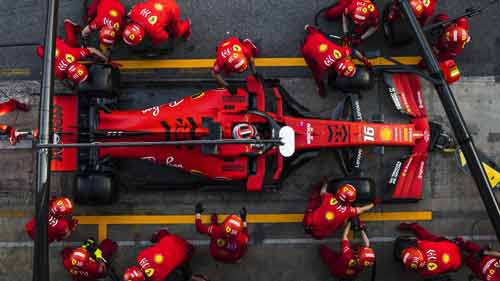
Formula One Tickets
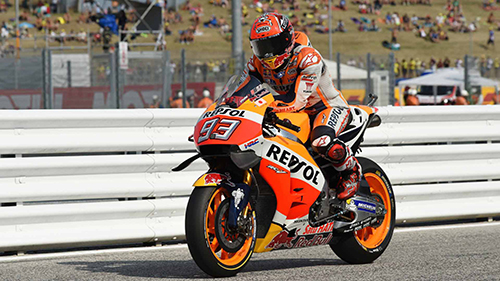
MotoGP Tickets
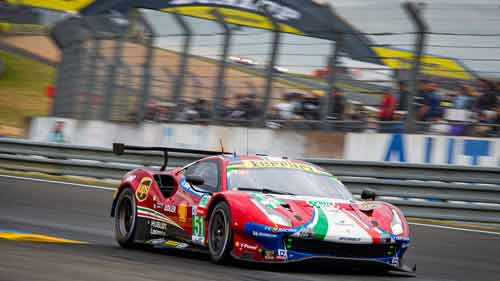
FIA WEC & Other Tickets

You might also like

Brazilian Grand Prix Tickets & Packages
Dates: Thursday 31st Oct – Monday 4th Nov 2024
SEE OUR PACKAGES CIRCUIT GUIDE
Brazil F1 Ticket & Travel Package
The Brazilian Grand Prix has to be one of he most iconic races in the history of F1; whether it was Lewis Hamilton and Jenson Button clinching their first titles, or Michael Schumacher failing to clinch his last, the Brazilian Grand Prix always offers incredible racing. Your Grand Prix Package includes your F1 Brazil tickets, return transfers to the Interlagos Circuit (for race and qualifying), return flights the airport of your choice (plus transfers), and 4 nights hotel accommodation in the stunning city of Sao Paolo. For those that want to extend their stay, additional nights are available on request. We can also add Interlagos F1 Hospitality Packages which include paddock walks, appearances from F1 Drivers, and exclusive hospitality areas.
Stunning Hotels in Sao Paolo.
3 Nights Hotel Bed & Breakfast 4* Hotel for 2 People Additional nights available
F1™ Grand Prix From Interlagos.
F1 Tickets for 2 people Grandstand Seating Circuit transfers for Qualifying & Race Formula 1 Brazil Hospitality Packages
Flights & Transfers.
Flights & Transfers for 2 People Return flights to Sao Paolo from UK Private Hotel Transfers Circuit transfers
100% Financial Protection.
100% Refund Guaranteed if a Grand Prix is cancelled. Full ATOL & ABTOT Protection.
OUR BRAZIL F1 PACKAGES
Bronze package: aurora hotel. sao paolo 4*.
- Race & Qualifying Grandstand
- 4 Nights bed & breakfast accommodation
- Return flights to Sao Paolo
- Airport return transfers
- Circuit transfers (Sat & Sun)
COMING SOON
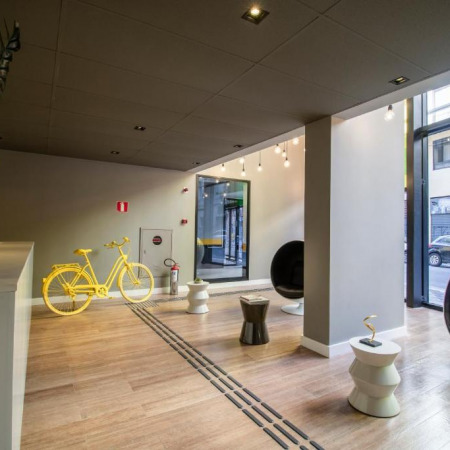
Silver Package: Hilton Hotel. Sao Paolo 4*
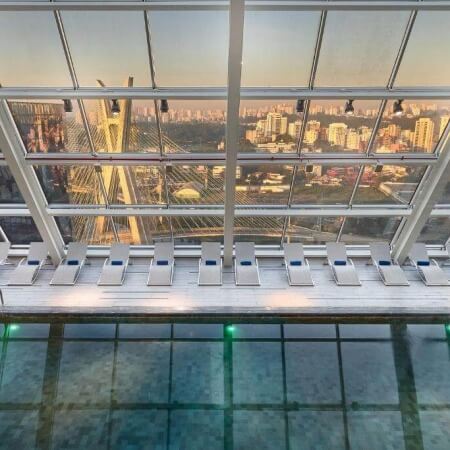
Gold Package: Grand Hyatt. Sao Paolo 5*
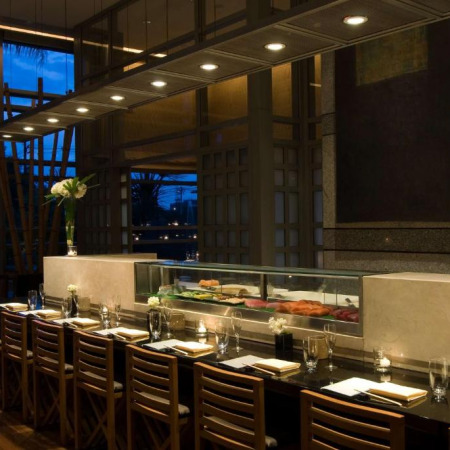
Where to Sit? Brazilian Grand Prix Grandstand guide.
- Want to know the best seats to sit at Interlagos?
- Want the best views, or the easiest access?
- Want the start, straight, or esses?
- Want to know the start time and weekend schedule for the Brazilian Grand Prix?
- Then click below for our handy guide!
INTERLAGOS CIRCUIT
MAP & GRANDSTANDS.

Friday 1st November 2024
Your Sao Paulo Grand Prix Package starts here!
Head for the airport and depart on a direct flight to Sao Paolo.
When you arrive at Sao Paolo Airport, you will be met in the arrivals hall by your driver and driven directly to your hotel.
You will then have the remainder of the afternoon and evening at leisure to explore Sao Paolo and the surrounding areas.
Saturday 2nd November 2024
Enjoy a leisurely breakfast at your hotel.
After your breakfast, you will be collected from the hotel and transferred to Interlagos Circuit, where you will get to enjoy Qualifying for the Brazilian Grand Prix.
Following the conclusion of qualifying races you will be transferred back to your hotel where you will have the remainder of the evening at leisure.
Sunday 3rd November 2024
After your breakfast, you will be collected from the hotel and transferred to Interlagos to enjoy the Brazilian Grand Prix.
Once racing is over, you will be transferred back to Sao Paolo to enjoy the rest of your evening.
Monday 4th November 2024
After your breakfast you will be collected from your hotel, and driven to Sao Paolo airport for arrival back to the UK. From there, sit back and relax on your flight home.
GET IN TOUCH TO SECURE YOUR BRAZIL F1 TICKETS TODAY.
CALL 020 3966 5680
OR COMPLETE THE ENQUIRY FORM BELOW
Brazil F1 Package
" * " indicates required fields
More Upcoming Packages
Miami Grand Prix Package
2nd - 6th May 2024
Emilia Romagna Grand Prix Package
17th - 20th May 2024
Monaco Grand Prix Package
24th - 27th May 2024

What’s Not Included:
- Prices listed are based on the lowest cost return flights from any London Airport. Alternative flight times are available on request.
- Flight tickets include cabin baggage only, hold baggage can be included for a surcharge.
- Unless otherwise stated, hotel city taxes are not included in the price.
- Interlagos F1 Tickets / Hospitality Packages available as part of VIP Package, or as an upgrade option.
See the full F1 Race Schedule for 2024 here: F1 Calendar
Quick Links
About Us F1 Calendar F1 Circuit Guide F1 Team & Driver Guide MotoGP Calendar FAQs Partners Blog Gallery Privacy Policy Cookie Policy T&Cs Travel Agents & B2B Sitemap
Australia Canada New Zealand USA
100% Financial Protection
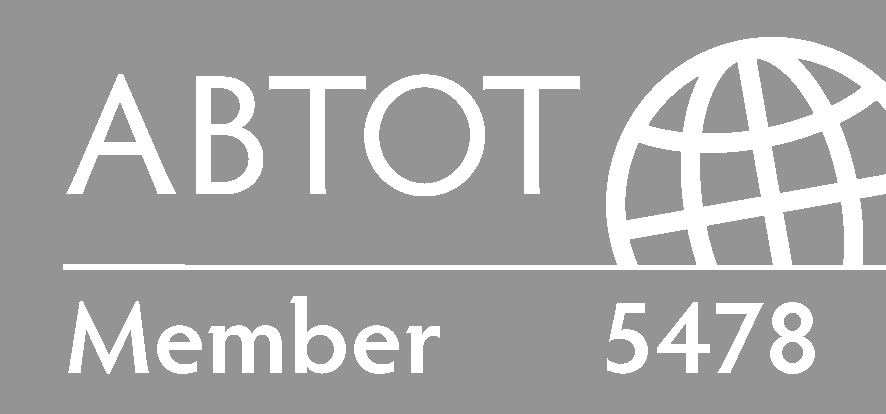
Google Reviews
Call: 020 3966 5680 Email: [email protected]
Latest news
Related posts:Drive to Survive Season 5 – Six Storylines to look out forWho Was The Stig?F1 Sprint Races Get Green-LightHow Much are F1 Tickets?
Related posts:Where & How to Buy Formula 1 Tickets For 2024 – A Beginners GuideWho Was The Stig?F1 Sprint Races Get Green-LightHow Much are F1 Tickets?
Related posts:Where & How to Buy Formula 1 Tickets For 2024 – A Beginners GuideDrive to Survive Season 5 – Six Storylines to look out forF1 Sprint Races Get Green-LightHow Much are F1 Tickets?

- Fale conosco
- Buy your tickets
- Corporate costumers
- Travel agencies
Brazilian Grand Prix
- Circuit Accesses
The Circuit
- History of the circuit
- Castilho's Column
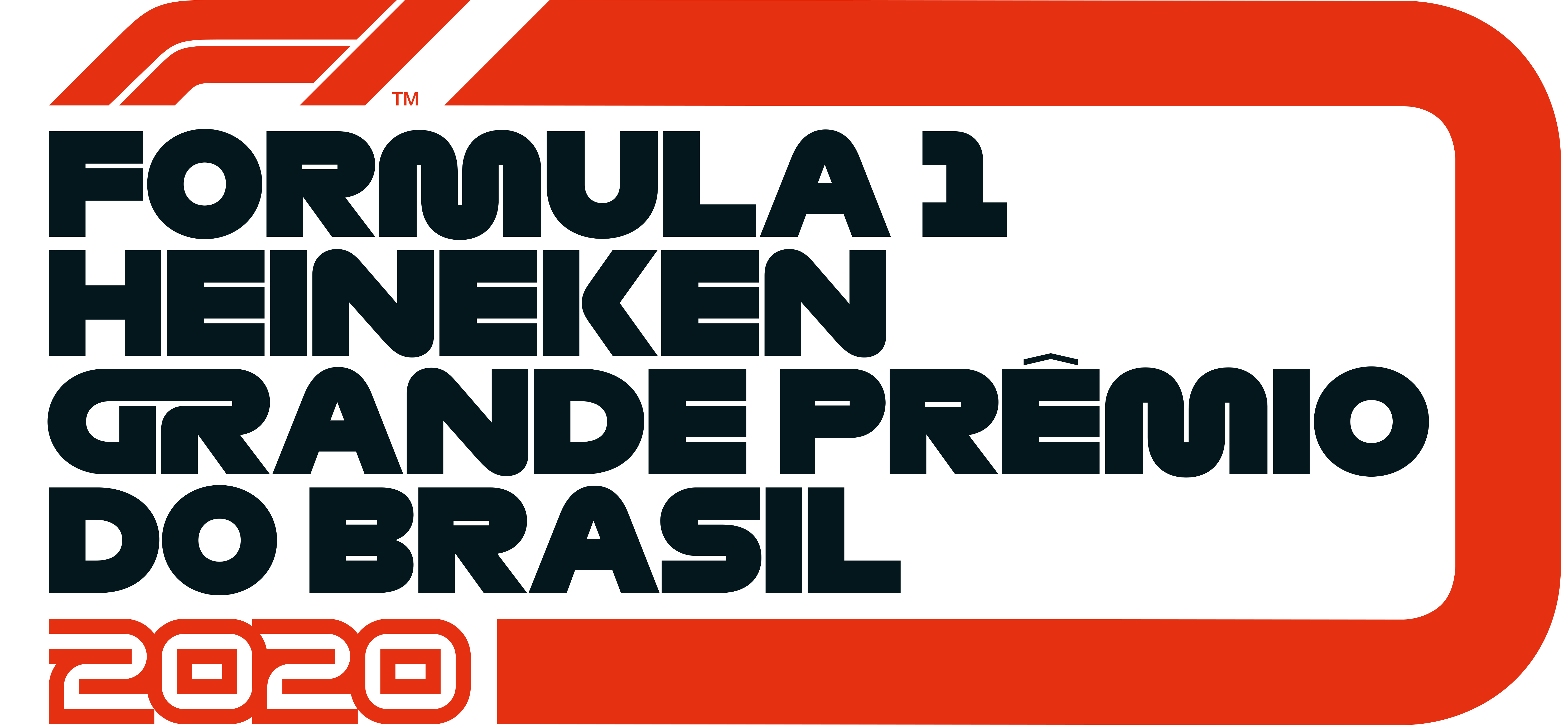
Welcome to the only official website of the Formula 1 Brazilian Grand Prix
Maximum Speed

Subida aos boxes
Bico de pato, pinheirinho, reta oposta, curva do sol, history of the circuit, interlagos, 80 years tradition.

Photo: Beta Issa
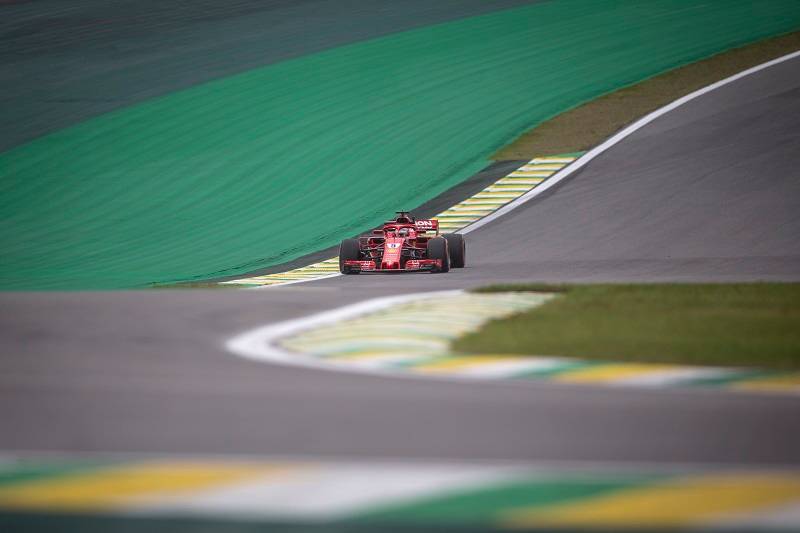
Photo: Jonne Roriz
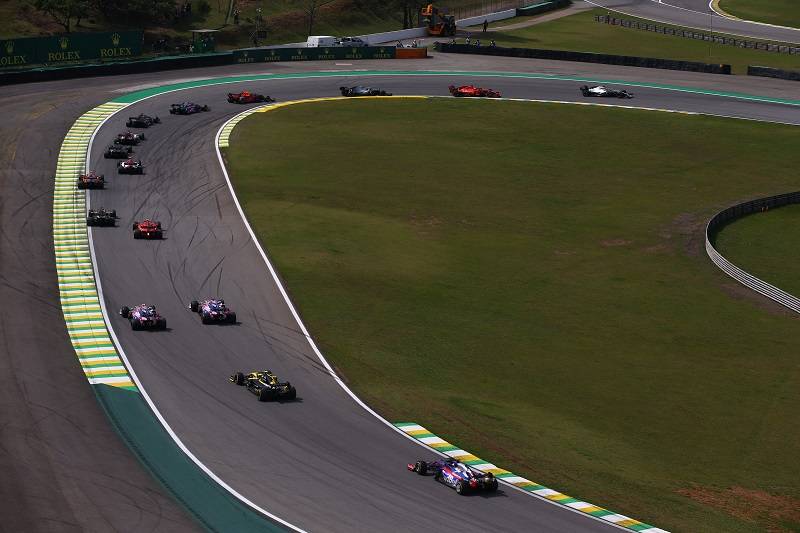
Photo: Duda Bairros

Tradition and maintenance are the most important elements for a circuit to host a Formula 1 race – not to mention making for great performances. Interlagos has it all. And the last few races have proven that the Brazilian circuit has paved the way for whatever the future may hold.
In 2018, for instance – when Verstappen came close to winning (had it not been for the infamous incident) –, Lewis Hamilton not only won the race, but also snatched the pole position, shattering the previous track qualifying record with a 1:07.281 lap. His teammate – Valteri Bottas – broke a record himself, seizing the fastest race lap in history of Interlagos at 1:10.540. The current track design, featuring new kerbs and ideally suited asphalt, as well as additional safety measures, laid the groundwork for the Mercedes drivers to reach new heights.
In 2019 Max Verstappen won for the first time in Interlagos. Track records were not beaten but were very close from it. The 2016 Brazilian GP – which marked Hamilton’s maiden win in the country –, however, was a true trial by fire for Interlagos. The relentless rain caused the race to be interrupted a few times, therefore, prolonging it, but attendees stayed put. The track’s drainage system worked as expected and drivers eventually managed to finish all 71 laps. Despite the massive water volume, none of the structures were affected. Interlagos is truly unique and winning there is a remarkable feat.
The track rose to international fame in the 1970s. After essential works were completed to adequate the then 7.960 metres to fast single-seater races, Interlagos saw the rise of Brazil’s first F1 world champion, Emerson Fittipaldi. It was there that Emerson won, in 1970, the International Formula Ford Championship. In the following year, he went on to win a Formula 2 race. By then, Interlagos was ready to host an extra-championship F1 race, which was won by Argentina’s Carlos Reutemann. Fittipaldi would eventually win in 1973, by which time the race was already part of the official calendar. He would win again in 1974, under heavy rain, and fellow Brazilian José Carlos Pace (after whom the circuit is named) would seal his only F1 win in 1975.
After a decade in Rio de Janeiro, Formula 1 made its way back to São Paulo in 1990. The original 7.9-kilometre track was reduced to 4.3 kilometres, in accordance with new international standards. The track became shorter but remained as challenging as ever, and closer racing made for even more interesting competition. From the 1970s on, Interlagos became the undisputed shrine for motor sports in Brazil, welcoming the sport’s elite, such as Jackie Stewart, Michael Schumacher, Nigel Mansel, Nelson Piquet, Niki Lauda and Ayrton Senna, year after year. The Formula 1 Grand Prix has attracted illustrious visitors to São Paulo, such as Mick Jagger, Gene Hackman, Ugo Tognazzi, Sydne Rome, Gael Garcia Bernal and several others. José Carlos Pace acted as a stuntman for Al Pacino in Interlagos for the movie “Bobby Deerfield”, directed by Sydney Pollack, during the weekend of the 1976 Brazilian Grand Prix. In 1979, former Beatle George Harrison was spotted in Interlagos in his only visit to Brazil.
The checkered flag has also been waved, on occasion, by famed celebrities. Football legend Pelé and supermodel Gisele Bündchen have had this honour. And then there is folklore – one cannot confirm or deny such stories; tales of drivers and team managers who swear that engines were changed during endurance races and were thrown to the bottom of the lake so no one would find out. There is even a story of a ghost, a white-clothed lady who would haunt drivers at the “Junção” corner during night races. So there you have it: a circuit from the 1940’s, contemporary and full of tradition at the same time.
Mensagem Enviada

Autódromo José Carlos Pace (Interlagos)
Sao paulo – brazil.
The Autódromo José Carlos Pace, better known as Interlagos, currently hosts the Brazilian GP, known today as the São Paulo GP, and is one of the circuits that has hosted the most races, being one of the favorites of drivers and fans.
The Interlagos circuit is 4.309 km long and is one of the few that is run anti-clockwise. It has hosted the Brazilian Grand Prix since 1972 and is one of the shortest and fastest circuits on the calendar, with constant ups and downs and changing weather, which makes for very interesting races.
Since its arrival in Formula 1, although it has not always remained constant, the Interlagos circuit has become one of the most emblematic of the category, producing some of the most historic moments. Therefore, today we will see everything about this important circuit.
Interlagos Circuit: Complete Data
Interlagos circuit: history.
The Interlagos circuit is one of the oldest on the current Formula 1 calendar. It has not remained constant over the decades, but has undergone modifications, restructurings and changes.
The track was inaugurated in 1940, as part of a project of reform and construction of a modern and luxurious neighborhood in São Paulo, Interlagos, located in a region between two artificial lakes, Guarapiranga and Billings. The project was planned in the 1920s, but the Crash of 1929 caused it to be delayed.
Thus, a circuit of 7.960 km and 15 turns was built, full of ups and downs, a first section very fast and a last one more technical, which was intended to be one of the best circuits in the world. It was closed in 1967 to be remodeled by several European experts and reopened again in 1972 to host the Brazilian Formula 1 GP, influenced by the popularity of the Brazilian driver Emerson Fittipaldi.
In 1977, following the death of Brazilian driver José Carlos Pace in a plane crash, who won at this circuit in 1975, the circuit was renamed in his honor.
The 1972 version was used until 1980, when ground effect cars, more vulnerable to potholes, raised concerns about the safety of the track, full of potholes, inadequate barriers, deep ditches and embankments. After 10 years out of the calendar, the new layout, remodeled, shortened and having passed safety tests, returned to host the Brazilian GP, in a design very similar to that of today.
Since then, it has remained constant in the calendar (with the exception of the 2020 edition due to the Covid-19 pandemic), suffering slight variations in the layout. Until 2004, the Grand Prix was one of the first rounds of the calendar, but from this date onwards it moved to the end of the season, hosting numerous title showdowns.
Interlagos Circuit: Layout Guide
Interlagos is characterized by its hilly terrain, with steep climbs and descents that put more power demands on the cars’ engines, as well as physically on the drivers due to its anti-clockwise orientation, which pushes the drivers’ necks to the left, instead of to the right like most circuits on the F1 calendar.
The actual circuit, of 4.309 km, consists of 15 turns, and is in general a fairly fast circuit. The race starts in the “Tribunas” section, which is a long straight (not completely straight) going up and then down, connecting to the “S do Senna”, which is a pair of left-to-right turns with a downward slope. Then there is the “Curva do Sol”, a round-shaped large radius left turn.
The “Reta Oposta” is the longest straight of the circuit, followed by two left turns called “Descida do Lago”, which connects with a slower and twisty uphill section, with changes of inclination, composed of the curves “Ferradura”, “Laranjihna”, “Pinheirinho” and “Bico do Pato”, which is the slowest and most technical section of the whole circuit, as they are right and left turns that follow each other.
This section is followed by turn 11, “Mergulho”, a constant-radius left-hand turn that takes the driver straight into a harder left, “Junção”. Turn 13, “Café”, on the left, connects to the upclimb “Subida dos Boxes” (Up to the pits), which is a long-left turn with a 10% slope that leads to “Arquibancadas”, a left-handed pronouncement that can be done at full throttle, ending at the straight line.
This last section is the fastest section of the circuit, and despite not being a straight as such, it is treated as if it were, being one of the longest full-throttle sections on the calendar. This is the list of the corners with their names:
- ‘S’ do Senna (Senna S) (1,2).
- Curva do Sol (Curve of the Sun) (3).
- Descida do Lago (Lake’s Descent) (4,5).
- Ferradura (Horseshoe) (6,7).
- Laranjinha (Little Orange) (8).
- Pinheirinho (Little Pine Tree) (9).
- Bico de Pato (Duck’s Bill) (10).
- Mergulho (Dive) (11).
- Junção (Junction) (12).
- Café (Coffee) (13).
- Subida dos Boxes (Up to the Pits) (14).
- Arquibancadas (Bleachers) (15).

Interlagos Circuit: Onboard Lap
The following video shows Lewis Hamilton’s pole lap during the 2021 Brazilian Grand Prix, obtaining a time of 1:07.931, more than four tenths faster than second-placed Max Verstappen. The Englishman, however, was disqualified because his DRS was not in compliance with the rules, but it is a smooth and perfect lap.
https://www.youtube.com/watch?v=TiTdrHl60Io
Interlagos Circuit: Weather
As mentioned above, the Interlagos circuit is known for its changing conditions. These changing conditions can be very abrupt and fast, going from light rain to heavy thunderstorms in a matter of moments.
It has offered dry and wet races, and races that have started in the dry and finished in the wet or vice versa, producing very unpredictable and entertaining races that have tempered the grid order.
Before the 2001 race, Rubens Barrichello had this to say about the crazy weather at Interlagos:
“A lot of factors have to be taken into account, from how practice goes on Friday and Saturday to the best set-up choice, and to what my Granny Isaura predicts for the weather. I trust her much more than the weather forecast, as she lives here!”
Interlagos Circuit: Curious Facts
- Interlagos, in Portuguese is literally “between lakes”, because as mentioned above, it is located between the Guarapiranga and Billings lakes.
- Pole position is not essential at Interlagos, as the changing conditions and overtaking opportunities mean that there are always many changes of position. Only 8 drivers have won in Brazil from pole position in the last 20 editions.
- Four Brazilians have won at Interlagos: Emmerson Fittipaldi (1973 & 1974), José Carlos Pace (1975), Ayrton Senna (1991 & 1993) and Felipe Massa (2006 & 2008).
- Michael Schumacher is the most successful driver at Interlagos, with 4 victories, in 1994, 1995, 2000 and 2002. However, Alain Prost has more Brazilian GP victories, six, but five of them were at the Jacarepagua circuit in Rio de Janeiro, which hosted races when Interlagos was being rebuilt.
- The Interlagos track was one of the first on the F1 calendar to run anti-clockwise.
- The Interlagos circuit is just 4.309 kilometers long. Among the current F1 circuits, only Monaco is shorter, but the Brazilian track is much faster.
- Interlagos is currently the only circuit in South America to host a Formula 1 Grand Prix. In the past, Argentina has been the other South American country to host an F1 Grand Prix.
- Ferrari is the most successful team at Interlagos, with 9 wins, the last one being in 2017 by Sebastian Vettel. It is followed by McLaren with 8, last winning in 2012 with Jenson Button, and Mercedes and Red Bull with 5 each.
- Brazilian drivers, with 10 pole positions, have taken more poles than drivers from any other nation at Interlagos.
Remarkable F1 Races At Interlagos
1991 brazilian gp.
The second edition after the return of Interlagos saw the local hero triumph. Ayrton Senna went into the 1991 Brazilian GP having never won his home race.
The Brazilian started in pole position and led most of the race. However, during the final part of the race, he had a problem with the gearbox, losing fourth gear by lap 60, and then fifth and third, until he was only able to keep sixth.
Despite this, he came first, ahead of Riccardo Patrese’s Williams, completing a legendary home victory.
2006 Brazilian GP
The 2006 Brazilian GP was the last round of the championship, and Fernando Alonso was 10 points ahead of Michael Schumacher in the championship, so the German, who was competing his last race with Ferrari, had to win the race and the Spaniard had to fail to score to win the championship.
Ferrari and Renault were also playing for the constructors’ championship. All this attracted more than 154 viewers. Alonso started the race in fourth position, while Schumacher started from tenth, and Brazilian Felipe Massa was the poleman.
Massa led the entire race comfortably, and while Schumacher climbed up the grid to fourth, Alonso moved up to second, winning his second straight championship along with the constructor’s championship with Renault. With his victory, Massa became the first Brazilian driver to win at home since Ayrton Senna’s victory in 1993.
2008 Brazilian GP
The 2008 Brazilian GP saw one of the most dramatic title showdowns in history, with the championship changing hands in a matter of seconds at the end of the race. Lewis Hamilton arrived in Brazil with a 7-point lead over Felipe Massa, so the Brazilian needed to win and Hamilton to finish sixth or lower to clinch the championship.
Massa completed the perfect weekend with a sublime drive, taking pole position and leading the entire race, which was in changing conditions and very chaotic. Meanwhile, Hamilton qualified fourth, and in the race was never higher than third, spending most of the time stuck in fourth or fifth position.
However, in the final laps, when the rain began to fall more heavily, Hamilton dropped to sixth, which was enough for Massa to win. The Brazilian crossed the finish line first and began to celebrate the championship. However, Hamilton, unbelievably in the last corner, overtook the position he needed, “stealing” the title from the Brazilian at the last moment in the most dramatic way possible.
2012 Brazilian GP
Once again, in 2012, we saw one of the tensest title showdowns of recent times at the Brazilian GP. This time, it was Ferrari’s Fernando Alonso and Red Bull’s Sebastian Vettel who were fighting for the title. Vettel came into the GP with a 13-point lead over Alonso, so the Spaniard needed to finish at least third even if the German failed to score.
On Sunday, Alonso started from seventh position, while Vettel started fourth, which seemed very favorable to the German. In the race, however, Alonso climbed to fifth on the first lap, while Vettel had a collision that sent him to the back of the grid, with damage to the sidepod, although he was able to continue the race.
Over the next few laps, Alonso moved up to second position, while Vettel began his particular comeback up the grid. Vettel completed a superb drive, making one overtake after another, until his compatriot Michael Schumacher let himself through for sixth place.
Alonso finished second, and Vettel sixth, so the German won his third consecutive title by only 3 points over the Spaniard, after one of the most chaotic races in recent times.
For 40 years, the Autodromo José Carlos Pace, popularly known as Interlagos, has been hosting the Brazilian Grand Prix, which with its passionate fans, enthusiasm, great track layout and weather conditions has offered very exciting races, full of drama, tension and action.
Trackguide – Read all about the Interlagos circuit!
You may also like
Check some other articles

Experience the thrill of Bahrain GP with P1 Travel. Read all about getting to the track, behind the scenes and the overall rating.
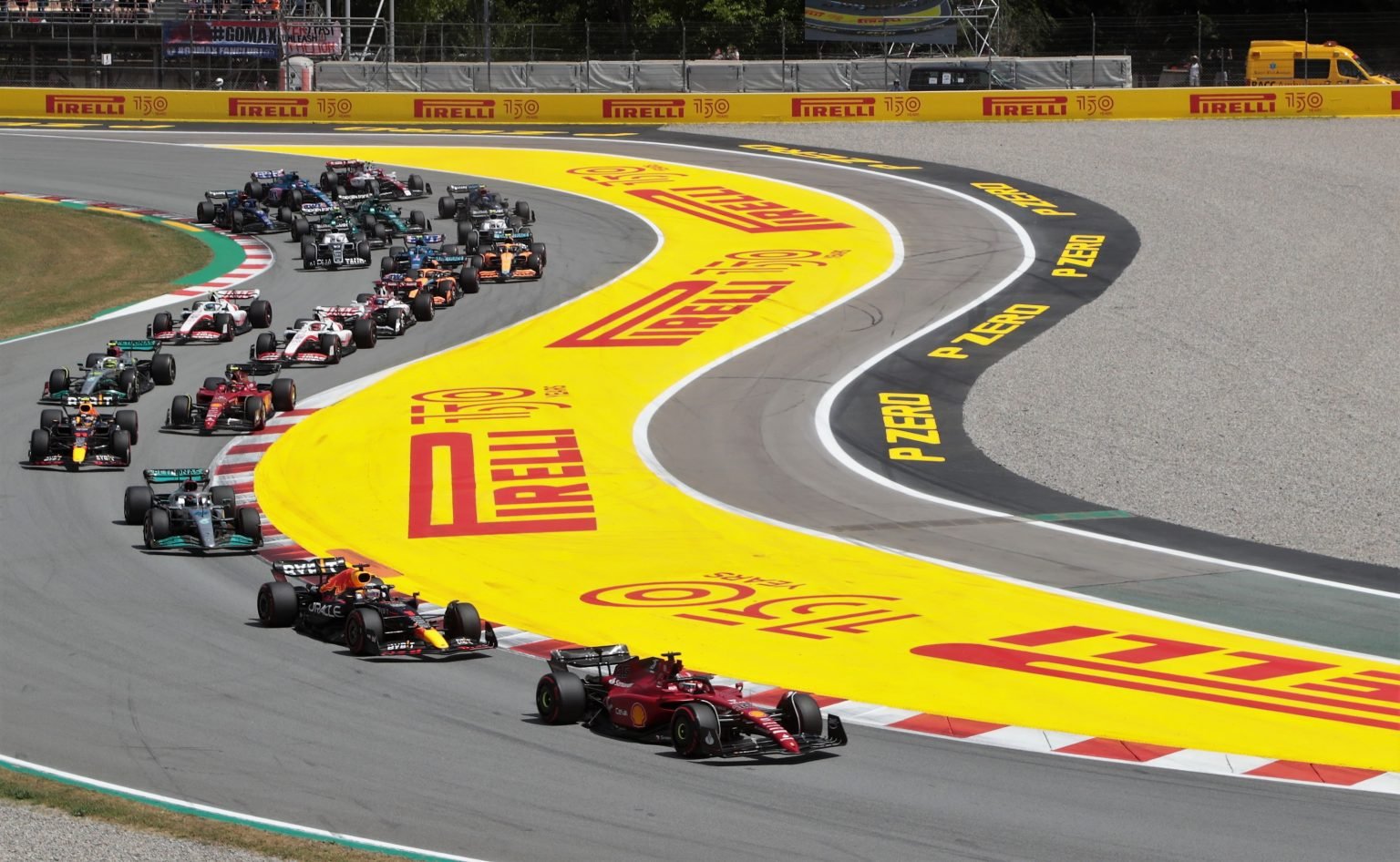
All races of the Formula 1 programme 2024 in a row. With information all the information on the circuits and some inside information.

Curious about circuit Silverstone? In this blog, we tell you everything you need to know about the British Grand Prix!
The historic Interlagos circuit has been a popular destination for racing fans from all over the world for decades. The official name of this circuit is actually the “Autódromo José Carlos Pace” . The 4.4-kilometre circuit has many sections that can be driven at top speed, despite elevation changes and some tight corners. Many drivers find Interlagos an interesting circuit because of its hilly surface, which is very demanding for the drivers and the power of the engines. We tell you everything you need to know about the Brazilian Grand Prix : all about the circuit, how to get to the track and, last but not least, the weather.
Directly to: 1) Interlagos circuit 2) Interlagos corners 3) Interlagos DRS Zones 4) Stands at Interlagos 5) Where is the Interlagos circuit 6) Is São Paulo fun to visit 7) What is the weather like at the Interlagos circuit? 8) Visit the Grand Prix in Brazil
Interlagos circuit
With 40 years of history and numerous memorable highlights, the home of the Brazilian Grand Prix is a special place for many Formula 1 fans. Although the circuit is known as Interlagos – which literally means ‘between two lakes’ – it is officially called the Autodromo José Carlos Pace , in honour of Brazilian driver Carlos Pace, who won the Grand Prix here in 1975 and met an untimely end two years later in a plane crash. Brazilian Emerson Fittipaldi won the first Brazilian GP at the Interlagos circuit in 1973.
An F1 race at the Interlagos circuit involves 71 laps, for a total length of 305.94 km. Interlagos is notorious for its many bumps, causing some damage to the bottom plates of some cars. The Autodromo Jose Carlos Pace is known for delivering exciting races because of its challenging track, high temperatures and changeable weather conditions.

Interlagos-corners
At the Autodromo José Carlos Pace , you can always expect a great spectacle and ambitious drivers who want to finish on top. We take you around this Brazilian F1 circuit and tell you all about the Interlagos corners .
Turn 1 to 5
The race starts on a long straight with an uphill gradient, with the first corner being the most popular place to overtake. You then arrive at the “Senna S” corners (Turn 1,2), a series of alternating corners with different angles of attack and inclination. The “Senna S” leads you to the “Curva do Sol” (turn 3), a wide left-hand bend that culminates in “Reta Oposta”, the longest (but not the fastest) straight on the circuit. The “Reta Oposta” is followed by a pair of descending left-hand turns known as the “Descida do Lago” (turn 4,5), after which comes a short uphill straight to the rear of the pit building.
Turn 6 to 12
This is followed by a slow section with small turns and elevation changes. The first corner of this section is known as “Ferradura” (Turn 6,7), a descending right-hand turn that leads into “Laranjinha” (Turn 8), another right-hand turn and also the slowest point on the circuit. The next turn leads to “Pinheirinho” (Turn 9), a left-hand turn on flat terrain; this is followed by “Bico de Pato” (Turn 10), a right-turning turn, and then “Mergulho” (Turn 11), a left-hand turn with a constant radius profile that sends the driver straight into a sharper left-hand turn called “Junção” (Turn 12).
Turn 13 to 15
“Café” (turn 13) is an ascending left turn that marks the start of the long top speed section. The drivers then reach “Subida dos Boxes” (turn 14), a long ascending left-hand turn with a 10% gradient that requires a lot of power from the cars. Finally, at the end of this turn comes “Arquibancadas” (turn 15), a wide left-hand turn at high speed that leads into the final straight with the start/finish line.
The series of left turns from the exit of “Junção” to turn 1 is usually taken at full speed and considered a long straight. This section is one of the longest full-speed sections on the Formula 1 calendar and therefore requires solid engine reliability.
Below is a list of all Interlagos corners with name, number, direction and speed:
Dit bericht op Instagram bekijken Een bericht gedeeld door Oracle Red Bull Racing (@redbullracing)
Interlagos DRS Zones
Interlagos has two DRS zones . The first zone is located along the straight between the last corner (Junção) and the Senna S-bends, while the second zone is along the straight after the Senna S-bends and before the Descida do Lago. DRS (Drag Reduction System) is a technology in Formula 1 that allows drivers to open their rear wings to allow for less drag and therefore gain more speed on straights. The DRS zones at Interlagos can therefore play an important role in overtaking, creating even more exciting races.
Stands at Interlagos
The Interlagos circuit is one of the few Grands Prix on the Formula 1 calender where standing-room (general admission) tickets are not on sale. That is one of the reasons why this track’s capacity remains locked at just 60,000 spectators per day. For many race fans, the best spots along the track are the two places where drivers can overtake each other most easily under normal circumstances – namely grandstand M, which is located on the outside of turn 1. The second part of grandstand G is also particularly suitable if you like to see a lot of action. This grandstand does not have seats but benches without backs. So it is less comfortable, but you do have a good view of turn four where a lot of the overtaking takes place.
Where is the Interlagos circuit?
Gaurulhos airport is widely used for international flights and is located about 30 kilometres east of São Paulo. If you hire a car there, be aware that traffic in the city can be gridlocked at times and navigating can also be a challenge in itself. Uber is popular there so it can be a great way to find a cheap ride. Buses in São Paulo are cheap but very slow. If you are looking for a faster way to get to and from the circuit or airport, it is therefore a better option to take the metro. In fact, the Autodromo metro station is just 500 metres from the circuit entrance.
Is São Paulo fun to visit?
São Paulo, or Sampa to the locals, is South America’s largest metropolis. Thanks to its beautiful museums, samba beats and fantastic food, it is a magnet for travellers. The metropolis in Brazil’s south-west is always on the move. No less than 21 million inhabitants live in São Paulo! It is nevertheless recommended to stay informed of your country’s travel guidance concerning São Paulo, due to potential instability or security concerns associated with criminal activity in the favelas.

Dit bericht op Instagram bekijken Een bericht gedeeld door Autódromo de Interlagos (@autodromointerlagos)
What is the weather like at the Interlagos circuit?
If you want to know the Interlagos circuit weather , you should keep an eye on São Paulo temperatures, which typically range between 17°C and 25°C in November. Those temperatures are perfect to visit the race without being too hot or too cold. You can expect rain in São Paulo for about half the month of November. To avoid any surprises, we recommend keeping an eye on the weather forecast in advance and always bring a poncho and/or an umbrella with you.
Visit the Brazilian Grand Prix
Experience the excitement and thrill of the Formula 1 season at Interlagos and discover why this legendary circuit is so loved by fans and drivers around the world. It is a circuit where new chapters are added to the rich history of the Brazilian Grand Prix every year. You will enjoy an incredible spectacle on the track, but you will also be amazed by the impressive city of São Paulo. So what are you waiting for? Book your tickets now with P1 Travel and prepare for an experience you will never forget!
Tickets GP Brazil


- Travel Guides
- Latest News
- Travel Reports
- F1 Experiences
Trackside at Interlagos – 2024 São Paulo Grand Prix

Your trackside guide to Interlagos and to attending the Formula 1 São Paulo Grand Prix 2024. Full race schedule & trackside tips for Brazil.
- The 2024 São Paulo Grand Prix is scheduled for November 1-3 . Tickets are now on sale
- F1 Experiences Ticket Packages are also available.
- Sign up to our mailing list (and check the box for Sao Paulo) to receive ticket & event updates.
- This post contains affiliate links. We may receive a commission if you make a purchase after clicking on one of these links
Interlagos may not be the most modern circuit or the best organized race on the calendar, but these shortcomings are more than compensated by the amazing trackside atmosphere and friendly, passionate local fans. The circuit has a relatively small capacity, with no general admission areas and no infield access – though new grandstands have been added to meet demand in recent years. Attendance at the race has been rising steadily since 2016, reaching a record 267,000 fans over three days in 2023 . It’s also been confirmed that Brazil will remain on the F1 calendar until at least 2030. Just like the last three seasons, Interlagos will once again host Formula 1’s sprint race format in 2024 .
Interlagos: Entry & Prohibited Items
- Gate Opening Times: The circuit gates open at 08:00 on Friday, Saturday and Sunday. Gates close at 16:00 on Friday and Saturday, and 14:00 on Sunday. There are no pass outs. Seven gates provide entry at Interlagos. Check the interactive map with gate locations.
- Circuit Entry for Children: Children aged 0-4 are not allowed to enter the circuit, whilst children aged between 5-11 must be accompanied by a parent/guardian. Children aged 12-15 can access the circuit if accompanied by a legal responsible person (above 18 years), with a written authorization signed by a parent or legal representative. Children aged 16-18 can enter the circuit without the need for authorization or being accompanied by a legal guardian.
- Food & Drink : Each person will be allowed to enter the circuit with up to three food items. Such items must be properly sealed and in their original packaging, except in the case of fruits which must be cut and kept in a ziplock bag. Whole fruits will not be allowed. Bottles, cans or any other sharp container are also not allowed.
- Prohibited Items : Included all kinds of guns and weapons, flammable and pyrotechnic materials, bulky items larger than 25x25x25cm (including coolers, folding chairs and large bags), and all glassware. Searches will be conducted upon entry. The full list is available on the FAQ here (page will need to be translated from Portuguese).
Interlagos: Useful Information
- How to get there : Read Getting There & Around for more information about how to get to Interlagos.
- Trackside Food & Drink : Snack bars with food and drinks are located in the different spectator zones at Interlagos. All trackside purchases need to be made with a Cashless Consumer Card, which can be pre-loaded with credit.
- Accessibility : All grandstands and spectator areas at Interlagos are wheelchair accessible
- Circuit Zones : It’s not possible to walk to different parts of the circuit. Each spectator area is self-enclosed and has its own entrance.


2024 São Paulo Grand Prix Schedule
- On-Track Schedule : The full timetable will not be confirmed until 4-6 weeks before the race. F1 session times are confirmed for 2024 and listed below
- F1 Sprint : For the fourth year in a row, the F1 Sprint format will return to Brazil in 2024 It will be the fifth of six F1 Sprint events on the 2024 calendar
- Support Categories : Brazil doesn’t offer the best on-track action compared to other races. Support races in 2023 were the Porsche GT3 Cup Brazil, Porsche Carrera Cup Brazil and the F4 Brazilian Championship. Support categories are TBC for 2024
- Pit Lane Walk : This is not held for regular attendees at Interlagos. F1 Experiences does hold a pit lane walk on Thursday for selected guests . In addition, guests in the Formula 1 Paddock Club and selected local hospitality suites can take part in daily pit lane walks at alloted times on Friday, Saturday and Sunday .
Friday, November 1
- 11:30-12:30: Formula 1 – Free Practice 1
- 15:30-16:14: Formula 1 – Sprint Shootout
Saturday, November 2
- 11:00-12:00: Formula 1 – Sprint (24 laps or 30 mins)
- 15:00-16:00: Formula 1 – Qualifying
Sunday, November 3
- 14:00-16:00: Formula 1 Grande Prêmio De São Paulo 24 (71 Laps or 120 mins)
Interlagos: Tips & Advice
- The weather is unpredictable at Interlagos and rain is common, so check the weather forecast and be prepared! There’s little shade from the sun, so pack your hat, sunglasses and sunscreen. Even if warmer weather is forecast, it’s worth bringing a sweater as it can get cool and breezy in the afternoons.
- If you’re sat in the cheapest “A” grandstand, be aware that these are concrete bleachers; bring along a small cushion or something to sit on.
- Danielle Mota, our Brazil expert, advice on sitting in Sector A at Interlagos: “The atmosphere in this sector is amazing. There are people from all over Brazil and around the world. Everyone is friendly and just happy to be at Interlagos. Watching the GP from here is a unique experience.” Read more here .
- Alice West went to the race in 2013: “Don’t bother packing an anorak for rain as you can buy a lightweight plastic poncho from vendors for next to nothing. Interlagos operates a no re-entry policy and they confiscate umbrellas, water and all sorts of other useful things on entry, so come with very little. Refreshingly, food and drink is pretty good and not expensive here and the toilets are clean and plentiful.” Read Alice’s report here
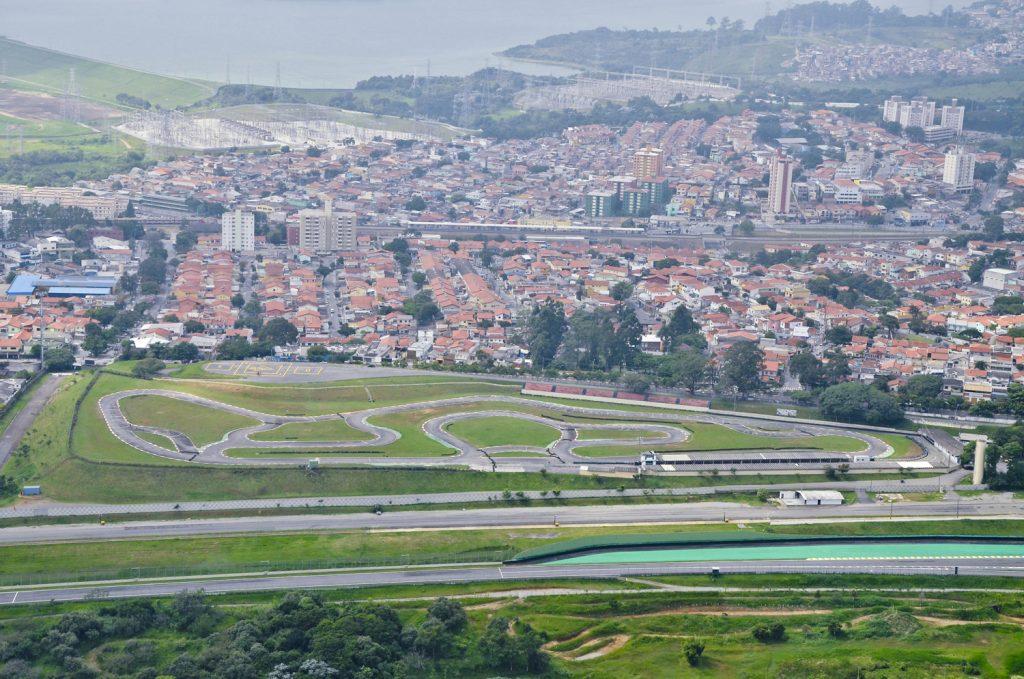
Kartódromo Ayrton Senna
No trip to Interlagos would be complete without a visit to the historic Kartódromo Ayrton Senna, a 1150 meter kart track adjacent to the main F1 circuit. Opened in 1970, this is where the careers of many of Brazil’s greatest drivers began, including Nelson Piquet, Ayrton Senna and Rubens Barichello. Twenty-five minutes behind the wheel of a racing kart will set you back R$120 (approximately $37 USD). Opening hours are Tuesday-Friday (17:30-23:00), Saturday (12:30-23:00) and Sunday (12:30 to 21:30). It’s probably worth booking ahead on Grand Prix weekend. More details here .
Visiting Interlagos on a non-race weekend? There’s a public park for walking and cycling around the perimeter of Interlagos. Access is via gate 7 or 9 and it’s open from 07:00-17:00, 7 days a week (but not during the race weekend.) You can also contact the circuit to arrange a track tour.
Been to Interlagos? Leave a comment and tell us about your experience!
Leave a comment cancel reply.
Your email address will not be published. Required fields are marked *

2024 F1 Calendar & Guides
- May 5 : Miami Grand Prix 2024*
- May 19 : Imola Grand Prix 2024
- May 26 : Monaco Grand Prix 2024
- Jun 9 : Canadian Grand Prix 2024
- Jun 23 : Spanish Grand Prix 2024
- Jun 30 : Austrian Grand Prix 2024*
- July 7 : British Grand Prix 2024
- Jul 21 : Hungarian Grand Prix 2024
- Jul 28 : Belgian Grand Prix 2024
- Aug 25 : Dutch Grand Prix 2024
- Sep 1 : Italian Grand Prix 2024
- Sep 15 : Azerbaijan Grand Prix 2024
- Sep 22 : Singapore Grand Prix 2024
- Oct 20 : United States Grand Prix 2024*
- Oct 27 : Mexico City Grand Prix 2024
- Nov 3 : São Paulo Grand Prix 2024*
- Nov 23 : Las Vegas Grand Prix 2024
- Dec 1: Qatar Grand Prix 2024*
- Dec 8 : Abu Dhabi Grand Prix 2024
*Sprint Race

2025 F1 Calendar & Guides
- Mar 16 : Australian Grand Prix 2025
- Mar 23 : Chinese Grand Prix 2025
- Apr 6 : Japanese Grand Prix 2025
- Apr 13 : Bahrain Grand Prix 2025
- Apr 20 : Saudi Arabian Grand Prix 2025
- May 4 : Miami Grand Prix 2025
- May 18 : Imola Grand Prix 2025
- May 25 : Monaco Grand Prix 2025
- Jun 1 : Spanish Grand Prix 2025
- Jun 15 : Canadian Grand Prix 2025
- Jun 29 : Austrian Grand Prix 2025
- July 6 : British Grand Prix 2025
- Jul 27 : Belgian Grand Prix 2025
- Aug 3 : Hungarian Grand Prix 2025
- Aug 31 : Dutch Grand Prix 2025
- Sep 7 : Italian Grand Prix 2025
- Sep 21 : Azerbaijan Grand Prix 2025
- Oct 5 : Singapore Grand Prix 2025
- Oct 19 : United States Grand Prix 2025
- Oct 26 : Mexico City Grand Prix 2025
- Nov 9 : São Paulo Grand Prix 2025
- Nov 22 : Las Vegas Grand Prix 2025
- Nov 30: Qatar Grand Prix 2025
- Dec 7: Abu Dhabi Grand Prix 2025
Recent Post
Muse to headline 2024 abu dhabi grand prix, trackside at circuit de barcelona-catalunya – 2024 spanish grand prix, tickets – 2024 emilia romagna grand prix, what’s happening in the city on 2024 miami grand prix weekend, how to buy tickets for the 2025 chinese grand prix, 2024 emilia romagna grand prix: everything you need to know before attending, how to get to hard rock stadium – 2024 miami grand prix.
This website is unofficial and is not associated in any way with the Formula One group of companies. F1, FORMULA ONE, FORMULA 1, FIA FORMULA ONE WORLD CHAMPIONSHIP, GRAND PRIX and related marks are trade marks of Formula One Licensing B.V.
F1Destinations.com
Copyright © 2024 F1Destinations.com | All rights reserved
Exclusive Member of Mediavine Travel
GDPR Privacy Policy

Interlagos: The Ultimate Track Guide
Since its arrival on the calendar in 1973, the Interlagos track in Sao Paulo, Brazil has hosted some dramatic races. The passionate fans together with the old school nature of the track layout always make the Brazilian Grand Prix weekend one to remember.
The Interlagos track is situated nine miles from the city centre of Sao Paulo. The neighbourhood had originally been plotting a racing circuit back in the 1920s, but this didn’t come to fruition for quite some time. Brazil’s history with motor racing began in 1934, with races on the Gavea circuit in Rio de Janeiro. Sao Paulo itself held a street race in 1936, but this was marred by a crash which resulted in the deaths of six spectators.
The plot of land which Interlagos is situated on – Interlagos meaning ‘between two lakes’ – had been set aside in 1926 for building houses on. However, such was the environment, the plot of land laid empty for years as it was unsuitable for the houses to be built. The financial situation due to the stock market crash in 1929 was also a factor in the area laying dormant. It instead became home to a demanding race track: Interlagos. The idea for a permanent circuit in the area was mooted in 1938, and was built by a construction company named Sanson over the next two years.
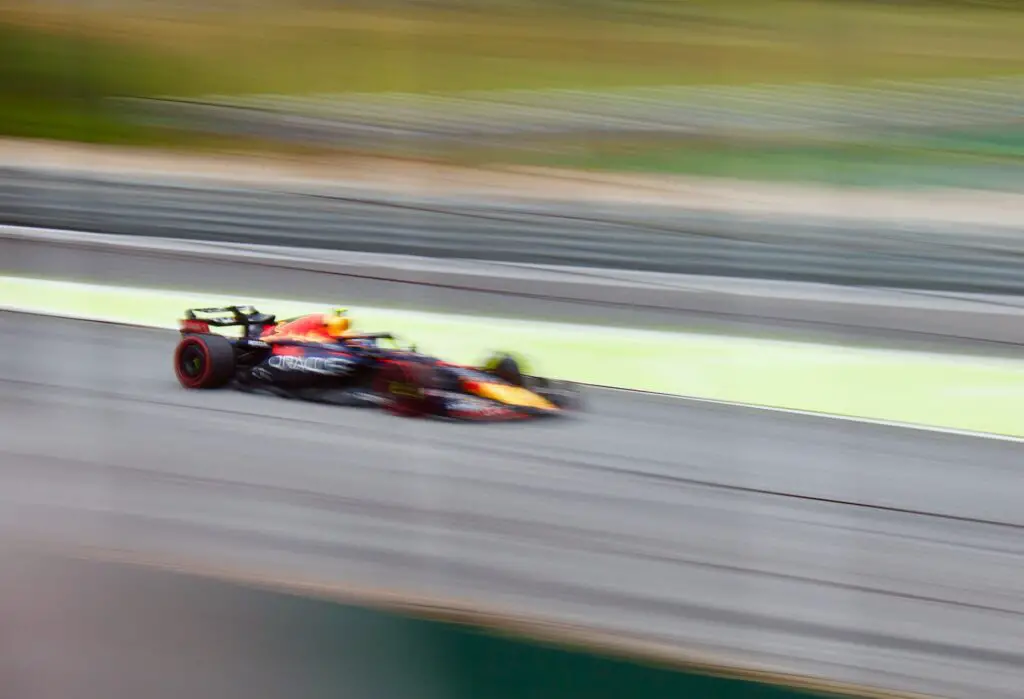
F1’s first venture into Brazil came in 1972 – the same year which the country had their first Brazilian F1 World Champion – and Carlos Reutemann won a non-championship round. The event proved Interlagos’ capability of holding a race, and in 1973 the circuit became home to the Brazilian Grand Prix.
It’s an area where time seems to stand still, though the surrounding Sao Paulo area seems to get slightly more built up with each visit. Elevation changes, with the track dipping down during the mid-part of the course before rising again on to the pit-straight. The pit-straight itself at Interlagos can feel claustrophobic, as it is placed in a dip between the grandstand and the pit-lane, which both have high walls. Interlagos’ pit-lane is one of the longest of the season.
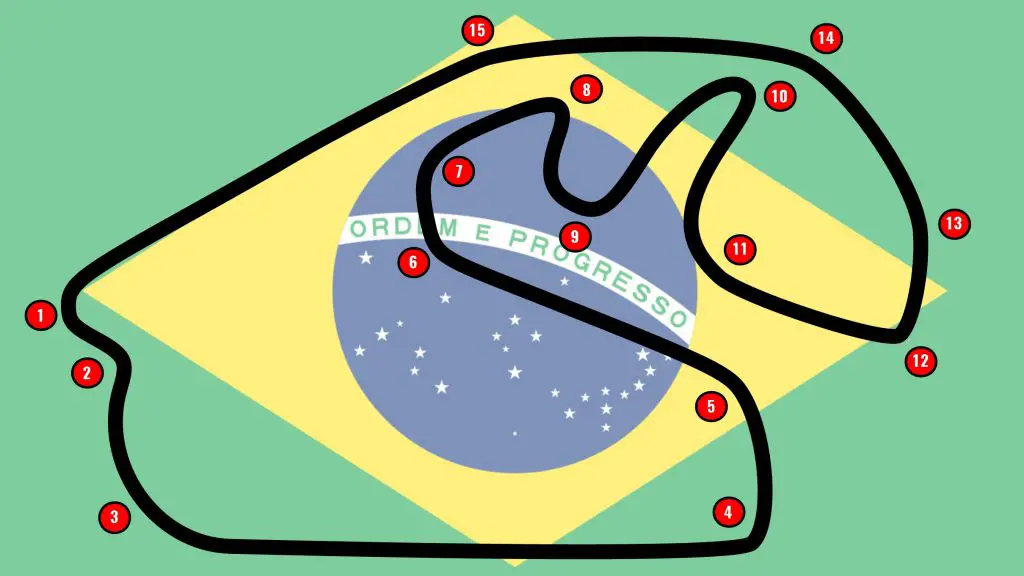
South American drivers won the Brazilian Grand Prix on all but two occasions in the 1970s. The track was renowned for being unforgiving and the track surface was at times difficult to master. The state of the surface was a talking point in the late seventies, and the Brazilian Grand Prix moved to the Jacarepaguá circuit in Rio de Janeiro for 1978 while renovations at Interlagos were carried out. F1 returned in 1979 to a track which had been resurfaced and had new facilities.
The two tracks – Interlagos and Jacarepaguá – were contracted to alternate hosting the Grand Prix, but the latter had begun to sink into the swampland it was built in, so the Brazilian Grand Prix remained at Interlagos for 1980. Some were still unhappy with the nature of the track’s bumpy surface and, with F1 now being presented to a global TV audience, some felt the unglamorous surroundings of Interlagos did not fit with the sport’s image. Dissatisfied with the surroundings and the lack of safety, the Brazilian Grand Prix moved back to the Rio de Janeiro circuit for the rest of the 1980s.
Interlagos has been the permanent home of the Brazilian Grand Prix since the sport returned to the track in 1990. When the track returned, it had been significantly shortened in length, from five miles to 2.7 miles, and renovations at the cost of $15 million had been carried out. There used to be an extra loop of the track which headed straight on at the first turn, before joining up with the current track at the Ferradura corner. The return of F1 to Sao Paulo was largely due to the superstar status of Sao Paulo-born Ayrton Senna.
Though more regularly known as Interlagos, the track is actually named Autódromo José Carlos Pace, in honour of Carlos Pace, a Brazilian driver who won at the track in 1975. The circuit was re-named in his honour after he was killed in a plane crash in 1977.
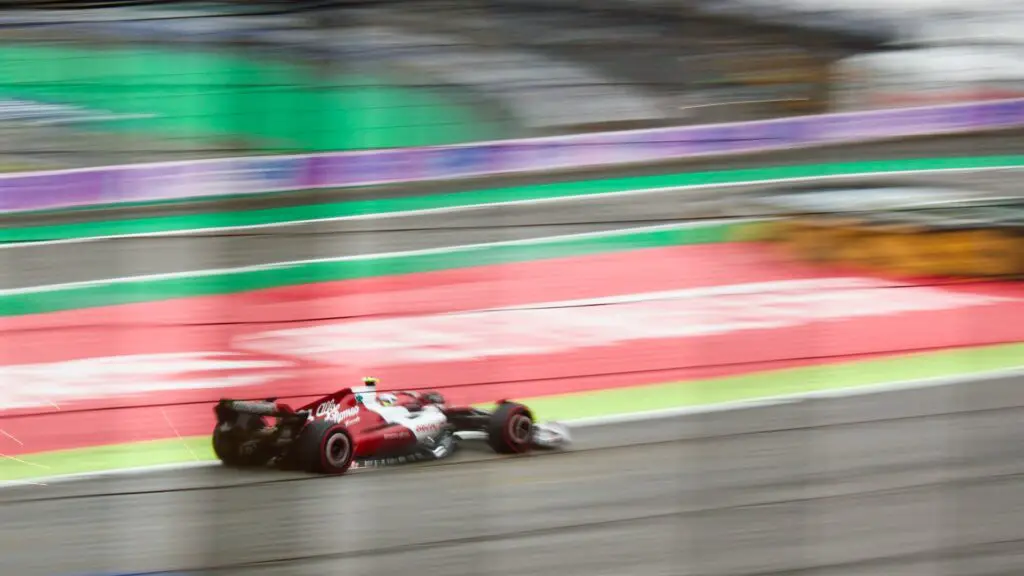
Interlagos has seen little change since 1990, though the asphalt was taken up and resurfaced in 2007, with the pit entrance also being slightly altered to improve safety. Changes to the track were planned in 2011 following a number of fatal accidents in other categories of motorsport, but the changes – which included extending the run-off area at the exit of the final turn and moving the pits to the straight between the Senna-S and Curva do Sol – never came to fruition.
The Grand Prix used to be held towards the start of the season, but switched to the back-end of the calendar in 2004, and has since seen multiple championships decided in highly dramatic races. Fernando Alonso, Kimi Raikkonen, Lewis Hamilton and Sebastian Vettel have all been crowned World Champions at Interlagos.
The Brazilian Grand Prix has seen some controversy in recent years, with drivers and team personnel falling victim to a spate of targeted robberies. With Brazil’s struggling economy, the future of the Brazilian Grand Prix always seems to have some doubt over it. Despite the threat of a new track in Rio de Janeiro, and the 2020 event being cancelled due to the coronavirus pandemic, Interlagos appeared on the schedule once again in 2021, this time with the new title of the Sao Paulo Grand Prix. In November 2020, the governor of Sao Paulo revealed that race organisers had signed a new five-year deal to keep the track on the calendar .
LEARN MORE ABOUT INTERLAGOS
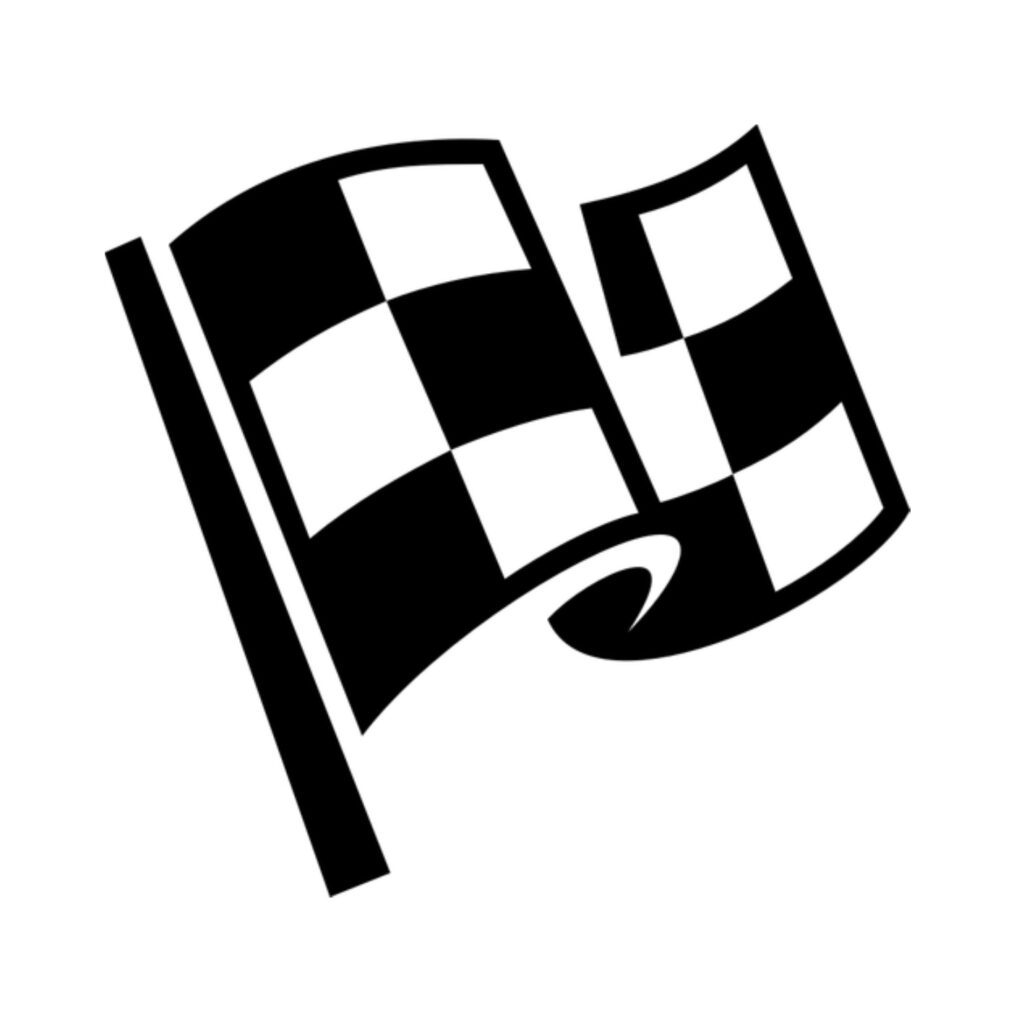
TRACK STATS
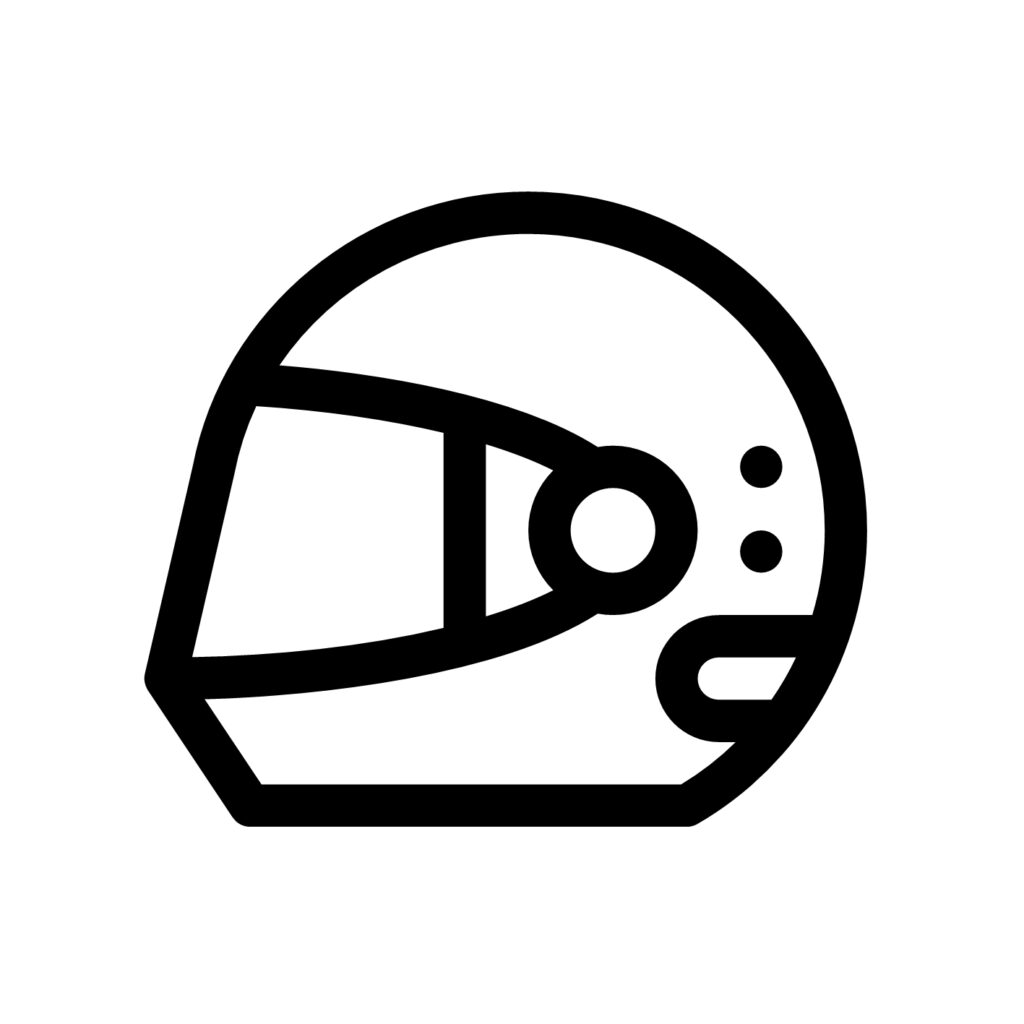
DRIVER FORM

GRID SLOT STATISTICS
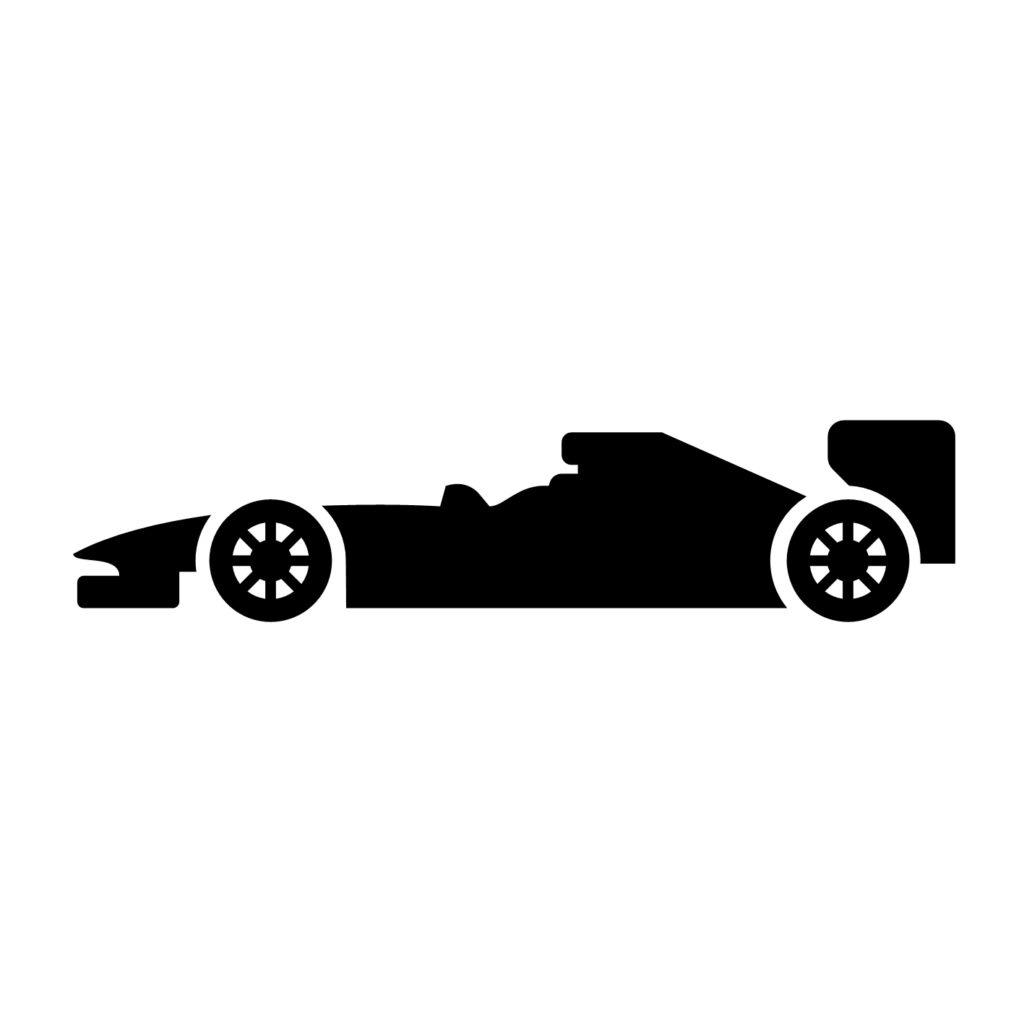
DID YOU KNOW?
The Interlagos track was one of the first on the F1 calendar to run anti-clockwise.
2023 SAO PAULO GRAND PRIX RECAP
Verstappen took his 17 th win of the season at the 2023 Sao Paulo Grand Prix in a race which will be remembered for the last lap battle between Alonso and Perez.
Interlagos hosted the final Sprint weekend of the 2023 season, so qualifying for the Grand Prix took place under ever-darkening skies on Friday afternoon. Max Verstappen secured the fastest lap time in the opening minutes of Q3, while his closest challenger Oscar Piastri had an off-track excursion in the final sector before the heavens opened. Such was the intensity of the rain, the session was red-flagged.
The weather had brightened come the Sprint Shootout on Saturday morning. SQ1 was punctuated by a red flag period following a collision between Fernando Alonso and Esteban Ocon, which saw the Alpine head into the barriers. McLaren’s pace was proving to be a challenge to Red Bull on Friday and that continued on Saturday. Lando Norris set the fastest lap time in SQ3 to take his first pole position – albeit for a Sprint rather than a Grand Prix – in over two years.
Norris and Verstappen lined up on the front row at the start of the Sprint and by Turn 1, Verstappen had taken the lead while both Mercedes drivers passed Sergio Perez through the opening corners. George Russell was soon on the tail of Norris’ McLaren and an audacious move saw him take second place, while Perez re-passed Lewis Hamilton for fourth.
On Lap 5, Norris re-took second place from Russell, while Perez followed the McLaren driver through three laps later; only for Russell to then re-pass him. At a track which famously promotes overtaking, there were plenty of passes taking place throughout the field.
Despite Norris closing to nearly within DRS range of Verstappen with around ten laps of the Sprint remaining, the race leader extended his advantage slightly and secured the final Sprint win of the year. Perez finished third, with Russell fourth and both Charles Leclerc and Yuki Tsunoda passing Hamilton in the closing stages.
Charles Leclerc crashed on his way to the grid ahead of Sunday’s Sao Paulo Grand Prix. That meant that Verstappen was the only front row starter, giving him a clear run to Turn 1 as race leader. Further back, there was a collision between Alex Albon and Kevin Magnussen, which eliminated both drivers from the race. Daniel Ricciardo’s rear wing was hit by debris, causing damage.
The red flag was shown as a result of the crash, under which repairs could take place to the damaged cars which had not retired – namely Ricciardo and Oscar Piastri. Both drivers were shown as a lap down when racing resumed.
The race restarted with a standing start on Lap 4. This time, Verstappen had Norris on the front row alongside him but was still able to hold a comfortable lead. Fernando Alonso made up a position, passing Hamilton for third at Turn 4.
Norris remained on Verstappen’s tail and challenged him for the lead at the start of Lap 8. The challenge was fruitless and the McLaren soon dropped out of DRS range. Perez and Russell went wheel-to-wheel on Lap 14 as the Red Bull driver made up a position. He gained another four laps later, this time passing the other Mercedes.
The Mercedes drivers continued to lose positions on a day to forget, while Verstappen continued to extend his lead out at the front. Russell retired on Lap 59. The latter stages were dominated by a battle for the final podium position between Perez and Alonso. Alonso had held his position despite intense pressure from the Mexican until the final lap. Perez got ahead midway around the lap only to be passed once more by Alonso in a drag race to the finish line.
Alonso secured third place by just 0.053 seconds, while Verstappen claimed his 17 th Grand Prix victory of the 2023 season by finishing eight seconds ahead of Norris.
2022 SAO PAULO GRAND PRIX RECAP
A thrilling race weekend at Interlagos saw Magnussen and Haas take their maiden pole position, while Russell dominated the race to take his first Formula 1 victory.
Wet weather crept in over Interlagos as Friday’s qualifying session began. The session began in wet conditions, but drivers had switched to slick compounds by the end of Q1. While Q2 stayed mostly dry, showers towards the end of the session set up a thrilling Q3.
Kevin Magnussen set the fastest time early on in the session, which was red flagged just 60 seconds later as George Russell beached his Mercedes in the gravel in worsening conditions. The rain continued and when the session resumed no drivers were able to improve their lap time – meaning Magnussen and the Haas team took their first ever pole position in Formula 1.
Magnussen started Saturday’s Sprint at Interlagos from the front of the grid and was able to hold off Max Verstappen in the opening laps. The Red Bull took the lead on Lap 3. Behind them, the two Alpine drivers made contact multiple times on the opening lap and both dropped out of the top ten in the final order as a result.
Alpine weren’t the only team with unhappy team-mates, with Lance Stroll causing team-mate Sebastian Vettel to take avoiding action. The incident earned Stroll a ten-second penalty. Back at the front, Magnussen began to drop down the order with George Russell and Carlos Sainz passing the Haas in quick succession. Magnussen eventually finished the Sprint eighth.
On Lap 12 of 24, Russell went wheel-to-wheel with Verstappen for the lead. He couldn’t immediately find a way by but, after a three lap scrap, Russell took the lead and with it secured the pole position grid slot for Sunday’s race. Verstappen soon came under pressure from Sainz. The Ferrari passed and the Red Bull picked up front wing damage. Lewis Hamilton capitalised and moved up to third – which became a front row start thanks a power unit penalty for Sainz.
The Mercedes took a healthy lead at the start, while Friday’s star Magnussen was eliminated on the opening lap in a collision with Daniel Ricciardo. That prompted a Safety Car deployment. At the restart, Verstappen made a move on Hamilton for second place only to run out of road and earn himself a time penalty.
McLaren’s bad day continued as Lando Norris made contact with Charles Leclerc – the Ferrari driver lucky to be able to continue in the race. Norris also picked up a penalty for the incident but would retire later in the race with gearbox issues.
Hamilton dropped down the field in his incident with Verstappen but soon made up positions and took the lead when his team-mate pitted. The more experienced Mercedes driver had to pass Sergio Perez on track for second place.
A further Safety Car period for Norris’ stoppage enabled Sainz – one of few drivers on a three-stop strategy – to make an effective final stop, putting him in contention for a podium finish. The Spaniard passed Perez with eight laps remaining.
Out at the front, Russell held off team-mate Hamilton to take the maiden victory of his Formula 1 career. Mercedes recorded their first 1-2 finish in over two years, while British drivers finished first and second for the first time since the 2010 Canadian Grand Prix. This was Mercedes’ only victory in the 2022 season.
Verstappen made up positions in the final stages as Perez dropped position in the later laps. Verstappen got ahead of his team-mate and was expected to let him back past at the final corner to aid the Mexican’s battle for second in the standings. Verstappen failed to oblige.
2021 SAO PAULO GRAND PRIX RECAP
The championship battle heated up on and off track at the Sao Paulo Grand Prix with a typically dramatic weekend at Interlagos, where Lewis Hamilton fought back twice to take victory.
In Formula 1’s third Sprint Qualifying weekend of the season, Lewis Hamilton set the fastest time in Friday’s conventional qualifying session at Interlagos. However, the Mercedes driver was disqualified from the session for a DRS infringement. Max Verstappen was also fined €50,000 for touching Hamilton’s rear wing in parc fermé.
Controversies aside, and after a Free Practice 2 session in which Fernando Alonso set the fastest time, Hamilton started from the back of the grid while Verstappen led the field away from pole in Sprint Qualifying. However, his lead did not last long. Valtteri Bottas overtook at Turn 1 and went on to secure pole position for Sunday’s Grand Prix. Carlos Sainz almost found his way past Verstappen, but the Red Bull driver later took the place back.
All eyes were on Hamilton in Sprint Qualifying, who fought back from the rear of the grid to fifth. He incurred a further five place penalty for the Grand Prix after taking on a new internal combustion engine. He started the race from tenth on the grid.
As the Sao Paulo Grand Prix began on Sunday afternoon, Lando Norris picked up a puncture after contact with former team-mate Carlos Sainz. In a reverse of Saturday’s Sprint Qualifying, Verstappen took the lead from Bottas at Turn 1. After a wide moment for Bottas, Sergio Perez made it a Red Bull 1-2. Hamilton repeated his overtaking show, with him getting up into fourth after just ten laps and disrupting Red Bull’s 1-2 by overtaking Perez on Lap 19.
Bottas pitted under Virtual Safety Car conditions, allowing him to get back ahead of Perez and secure the final podium position. Out at the front, Hamilton closed in on Verstappen. Verstappen ran both cars off the track in an incident which was deemed not to be worthy of investigation. Hamilton made a more successful attempt a handful of laps later, with a race-winning move for the Mercedes driver.
2019 BRAZILIAN GRAND PRIX RECAP
A memorable race at Interlagos for the 2019 Brazilian Grand Prix saw Max Verstappen win from pole position as Pierre Gasly and Carlos Sainz took their maiden podium finishes.
Carlos Sainz suffered an early exit from qualifying for the 2019 Brazilian Grand Prix, with engine troubles seeing him start from the back of the grid. It was Max Verstappen who took pole position at Interlagos, lapping 0.123 seconds faster than Sebastian Vettel, who started alongside him on the front row.
At Turn 1, Lewis Hamilton swept by Vettel for second place as Verstappen maintained his lead up front. Charles Leclerc, who started from fourteenth following an engine penalty, made gains on the first lap. Lando Norris and Daniel Ricciardo battled over eleventh place, and a few laps later Ricciardo collided with Kevin Magnussen’s Haas as he attempted an overtake.
Hamilton was first of the front-runners to pit, followed one lap later by Verstappen. The Red Bull driver was caught up in the pit-lane by Robert Kubica, with the pair almost colliding. That led to Verstappen emerging from the pit-lane behind Hamilton – but Verstappen made a bold move at the first turn on the next lap to re-assume the lead.
After a 25 lap lull in proceedings, Valtteri Bottas retired from the race with a smoking engine, leading to a Safety Car period. Verstappen pitted, while Hamilton stayed out. The free pit stop gave Verstappen fresh rubber while allowing him to stay right on Hamilton’s tail at the restart. The pair went wheel to wheel again at Turn 1, with Verstappen again coming out on top. Behind them, Alex Albon passed Vettel for third place.
That left the Ferrari pair running together, and disaster struck for the team a few laps later as the pair collided, ending both of their races. The safety car came out again, and it was a Red Bull 1-2-3 at the restart, with Pierre Gasly’s Toro Rosso in third place. Hamilton was soon by Gasly, and set about finding a way past Albon. But a mistake from the World Champion saw him collide with the Red Bull, allowing Gasly back through to an unlikely second place.
Hamilton tried to fight the Toro Rosso, but Gasly held on to finish second behind Verstappen, taking the first podium finish of his career. Hamilton finished third, but a post-race penalty for his incident with Albon saw him demoted to seventh in the final order. All of that led to Sainz – who had started last – being promoted to the final podium spot, scoring McLaren’s first top three finish in over five years.
2018 BRAZILIAN GRAND PRIX RECAP
Mercedes claimed the Constructors’ Championship as Lewis Hamilton took victory. The main talking point was the on and off-track contact between Max Verstappen and Esteban Ocon.
With rain in the air, there was drama on Saturday as Sebastian Vettel received a hefty fine for breaking the FIA’s weighing scales. The rain helped to switch the order up slightly, with Marcus Ericsson qualifying a best-ever seventh.
It was Lewis Hamilton who started from pole though, and he maintained his advantage on the first lap. Meanwhile, Max Verstappen put on another overtaking display and was soon on the tail of Hamilton. The Dutchman became the race leader and continued to set fast laps as the Mercedes driver pitted. Verstappen later pitted, but emerged behind Hamilton after a slow pit-stop. Nevertheless, four laps later, the Red Bull driver was in the lead once again after a pass on Hamilton on the main straight.
On the 44 th lap, Verstappen collided with Esteban Ocon, who was attempting to un-lap himself. The resulting spin allowed Hamilton back into the lead. The Force India driver received a ten-second stop/go penalty for the incident. Behind them, Vettel and Daniel Ricciardo scrapped for fifth place, with Ricciardo soon passing Bottas for fourth.
Hamilton won the race, with a disgruntled Verstappen finishing second and Kimi Raikkonen completing the podium. The result saw Mercedes clinch the Constructors’ Championship. After the race, Verstappen headed to the weighing area to seek out Ocon and later received disciplinary action from the FIA for shoving the Force India driver.
INTERLAGOS WINNERS AND POLESITTERS

Circuit Scout: Interlagos

F1Worldwide.com
All The F1 News - Read It Here First
The Brazilian Grand Prix – Interlagos Layout
By jonny noble.

The Brazilian Grand Prix is one of the most thrilling and historic races on the Formula 1 calendar. Held at the iconic Interlagos circuit in Sao Paulo, the race has witnessed some of the most memorable moments in the sport’s history, from Ayrton Senna’s emotional home victories to Lewis Hamilton’s dramatic title clinch in 2008.
In this article, we will take a closer look at the Interlagos layout, which combines high-speed straights, tight corners and challenging elevation changes. We will also explore the history of the race, the current track records and the best places to watch the action from the grandstands.
The Layout of the Interlagos Circuit
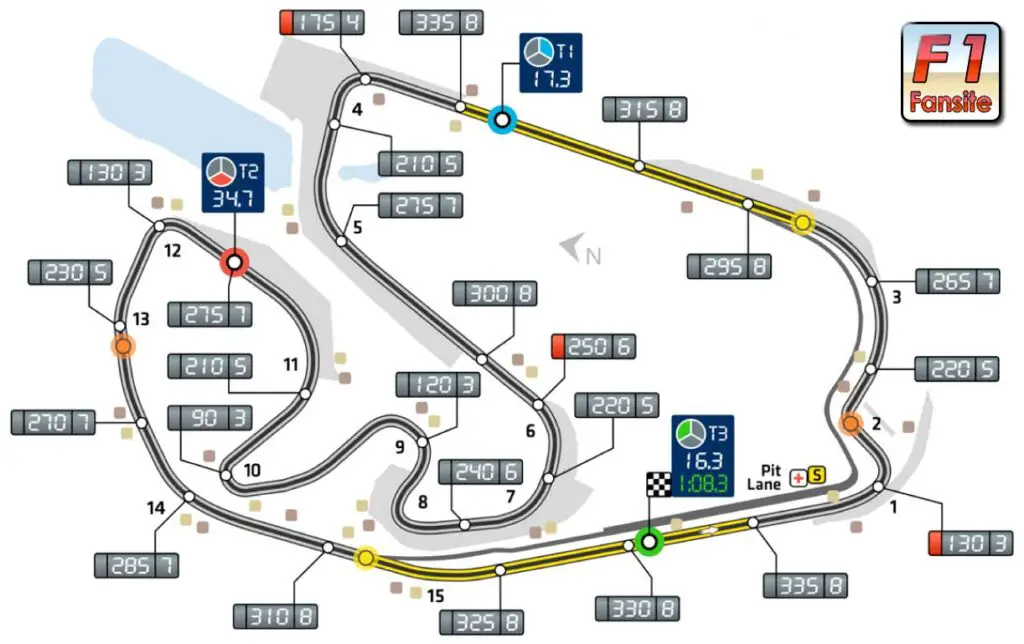
The Autodromo Jose Carlos Pace , also known as Interlagos , is a 4.309 km (2.677 mi) motorsport circuit located in the city of Sao Paulo, Brazil.
It is the current venue of the Brazilian Grand Prix, one of the most historic and exciting races on the Formula One calendar. The circuit has a challenging layout with many elevation changes, fast corners and a rough surface.
It runs counterclockwise and has 15 turns, each with its own characteristics and challenges. The following gives a corner-by-corner description of the Interlagos layout. We highlight the key features, overtaking opportunities and lap records.
Brazilian Grand Prix – Turn 1: Senna S
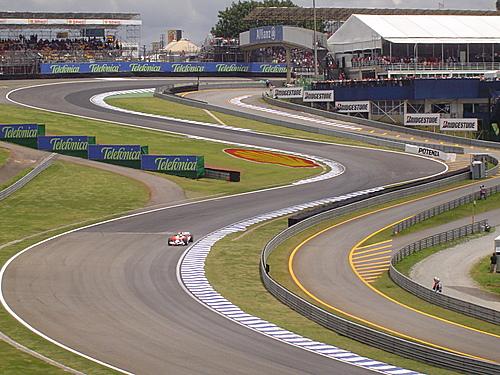
The first corner of the lap is a tight left-right chicane named after Brazil’s most famous F1 driver, Ayrton Senna.
It is one of the best overtaking spots on the track. The drivers approach it at over 300 km/h (186 mph) and brake hard to around 100 km/h (62 mph).
They have to balance their speed and line through the chicane, avoiding the kerbs and the bumps. The exit of Turn 2 is crucial for the run down to Turn 4.
Brazilian Grand Prix – Turn 3: Curva do Sol
The third corner is a long right-hander that leads onto the back straight. It is taken flat out at around 260 km/h (162 mph) and requires a lot of grip and stability from the car.
The drivers have to stay as close to the inside as possible, without running wide onto the grass or the gravel. The exit speed is important for the top speed on the straight.
Brazilian Grand Prix – Turn 4: Descida do Lago
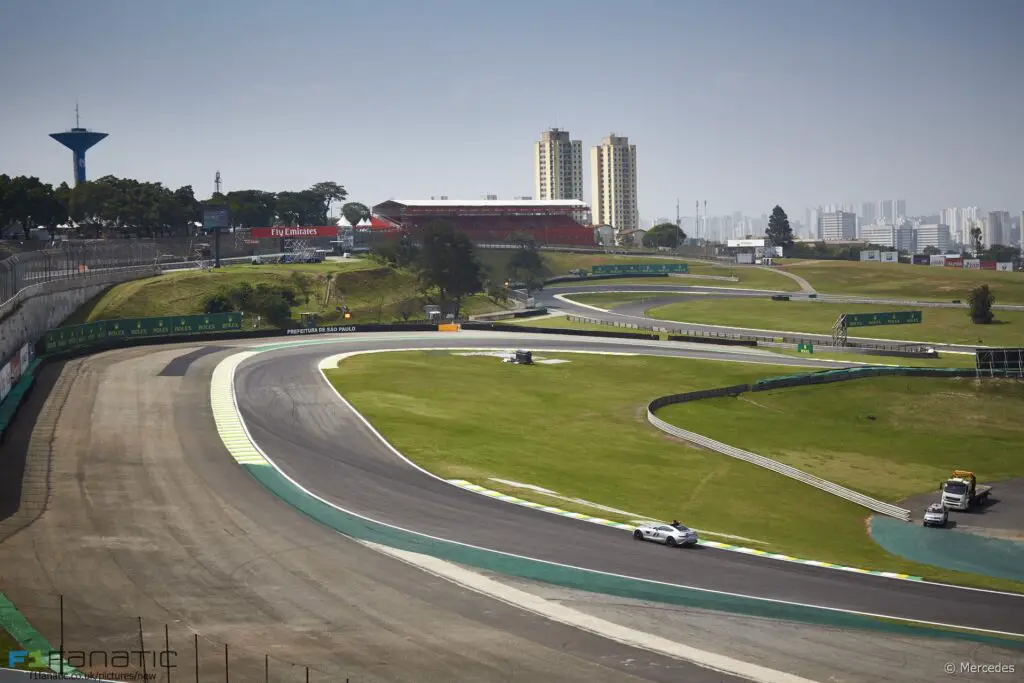
The fourth corner is a downhill left-hander that marks the end of the back straight. It is another good overtaking spot, as the drivers brake from over 320 km/h (199 mph) to around 140 km/h (87 mph).
The drivers have to be careful not to lock up their wheels or miss their apex, as there is not much run-off area on the outside.
The exit of Turn 4 is also tricky, as there is a bump that can unsettle the car.
Brazilian Grand Prix – Turn 5: Curva do Laranjinha
The fifth corner is a fast right-hander that follows Turn 4. It is taken at around 200 km/h (124 mph). It requires a lot of confidence and precision from the drivers.
The drivers have to clip the apex and avoid running wide onto the astroturf or the grass. The exit of Turn 5 leads into a short straight.
Brazilian Grand Prix – Turn 6: Curva do Pinheirinho
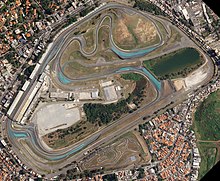
The sixth corner is a slow left-hander that breaks up the rhythm of the fast section. It is taken at around 100 km/h (62 mph) and requires a lot of braking and traction from the car.
The drivers have to be careful not to overshoot their braking point or lose time on the exit. The exit of Turn 6 leads into another short straight.
Brazilian Grand Prix – Turn 7: Curva da Bico de Pato
The seventh corner is a sharp right-hander that precedes Turn 8. F1 drivers take at around 120 km/h (75 mph) and requires a lot of steering input and balance from the car.
The drivers have to turn in early and hug the inside kerb, without touching it too much. The exit of Turn 7 is important for the run down to Turn 8.
Turn 8: Curva da Junção
The eighth corner is a long left-hander that leads onto the main straight. It is taken at around 160 km/h (99 mph) and requires a lot of throttle control and stability from the car.
The drivers have to stay as close to the inside as possible, without running wide onto the slippery concrete or the grass.
The exit speed is crucial for the top speed on the straight.
Turn 9: Subida dos Boxes

The ninth corner is a banked right-hander that marks the end of the main straight. Drivers take it flat out at over 300 km/h (186 mph) and requires a lot of courage and downforce from the car.
The drivers have to keep their foot on the gas and aim for a late apex, without hitting the wall on the outside.
The exit of Turn 9 leads into another short straight.
Turn 10: Curva do Café
The tenth corner is a fast left-hander that follows Turn 9. Drivers take it at around 260 km/h (162 mph) and requires a lot of grip and stability from the car.
The drivers have to clip the apex and avoid running wide onto the astroturf or the grass. The exit of Turn 10 leads into the Senna S, completing the lap.
Brazilian Grand Prix – Lap Record
The current lap record for the Interlagos circuit is 1:10.540, set by Valtteri Bottas in a Mercedes in 2018.
The fastest pole position time is 1:07.281, set by Lewis Hamilton in a Mercedes in 2018.
Back To Main Article about the Brazilian GP
ABOUT THE AUTHOR - Jonny Noble I’m a dedicated F1 Writer – and I’ve Been One for Over Four Decades, I’ve been intimately immersed in the world of Formula One for more than 44 years. That’s longer than most professional commentators can boast! As an independent writer, I offer a unique perspective on the entire F1 landscape, free from biases that might cloud the discussion. We dive deep into the exhilarating, frustrating, and captivating facets of the F1 universe. So, regardless of my amateur status, one thing is undeniable: four decades of dedicated F1 fandom have forged strong opinions worth exploring!
Related Post
An f1 driver’s guide to the miami grand prix circuit, navigating the imola gp circuit: a detailed look, the canadian grand prix f1: a lap around the circuit gilles villeneuve, f1 bombshell: hamilton to ferrari in sensational 2025 switch, f1 las vegas 2023, lia block: the youngest rally champion and the future of formula one, what are f1 backmarkers.
Brazilian Grand Prix ⋅ Getting to Interlagos
Plan your brazilian grand prix.
- grandstands
Autódromo José Carlos Pace or Interlagos as most people know it is about 25km south of Brazil’s largest city, São Paulo and 40km from Guarulhos International Airport where most international visitors arrive. From the lively downtown area around Avenida Paulista where most visitors to the Grand Prix stay you can go to the track by bus, train, taxi or in your own vehicle.
Getting to São Paulo for the Brazilian Grand Prix
There are three airports in São Paulo with Guarulhos International (GRU) and Viracopos (VCP) handling all international arrivals, as well as some domestic flights with Guarulhos being the most common point of entry. If there’s not much difference between the cost of flights its almost always better to fly into Guarulhos as there aren’t many transfer options between Viracopos and downtown São Paulo and you might have to take an expensive taxi ride.
- Coming from Europe there are many direct flights from Madrid (Air Europa, Air China), Barcelona (Iberia) and Lisbon (TAP Portugal) and its about 10 hours flight time.
- From the UK, British Airways run direct flights to São Paulo taking about 11 hours flight time.
- From the US, there are direct flights (Delta, American Airlines and LATAM Brasil, etc.) from most major cities with a flight time of 7 – 12 hours.
If you’re flying in from elsewhere in Brazil, you may have a flight to Congonhas Airport. From here there are shuttle buses to Interlagos for F1 fans so its possible to fly in and go straight to the track and vice versa. See below for more details on the shuttle bus service.
Coming from other towns and cities in Brazil many F1 fans arrive in São Paulo by coach, and in fact, given the expense of flights within South America, many international visitors from countries in the region do the same. There are 3 major bus terminals in São Paulo, all of which are a short walk to the city’s metro.
- Terminal Rodoviário Tietê: Av. Cruzeiro do Sul 1.800, Santana (Tietê metro station, Blue line)
- Terminal Rodoviário da Barra Funda: Av. Auro Soares de Moura Andrade 664, Barra Funda district, Expanded Center (Barra Funda metro station, Red Line)
- Terminal Rodoviário de Jabaquara: R. dos Jequitibás s/n, Jabaquara district, South Side (Jabaquara metro station, Blue Line)
Getting around in São Paulo, travel to and from the airport and access to the Grand Prix at Interlagos
As a visitor to the Grand Prix and as a tourist in the city you can get just about anywhere you’ll want to go (including the track) by the metro and overground train network. There are trolley buses and regular buses and taxis too of course. Walking around outside of the central tourist areas is not recommended and at night you’re advised to take a taxi or Uber for your security.
Train and Metro
The metro, consists of 5 underground lines serving the inner city while overground train lines run to more outlying suburban locations. The network is clean and safe for tourists to use, though at peak times overcrowding can make it unpleasant.
The ticketing system is straightforward; buy single use tickets (R$4.00) at any station from either the machines or ticket desk and you can travel as far and as long as you wish. Transfers to other lines are free where the map shows a white connection and paid where its black.

for the Airport/s
There are not metro lines that connect directly to Sao Paolo’s airports. If you’re taking a bus to connect with the nearest metro station, be advised that you may not be allowed on with large luggage, especially during peak hours.
for the Grand Prix
Getting the train and metro to the Grand Prix makes a lot of sense as it offers the best combination of price and reliability and is also much faster that driving. It tends to be the most popular way to get to the circuit, especially for international visitors.
To get to the circuit by train, it takes about an hour from Paulista/Downtown area where many tourists stay. You can take the Yellow line 4 to where it connects with overground Emerald line 9 at Pinheiros station. From here take the train in the direction of Grajau and get off at Autodromo, the nearest station to the Interlagos circuit.
From here its about 10 – 30 minutes to walk, depending on where your seats are; or a short taxi ride (about 10-20 pesos). Buy your tickets there and back in advance to avoid queuing both times.
You can choose to take buses to get around in São Paulo, though its usually easier to stick to the metro. The one exception is going to and from the airport.
From Guarulhos International there are shuttle buses and regular buses that can take you to Downtown São Paulo or, for a faster route, connect with the nearest metro station and continue by train. Many airlines including TAM, Gol and Azul provide a free shuttle bus for their passengers so check with your airline first.
Grand Prix Shuttle Bus
Each year there are a number of F1 Express shuttle buses to Interlagos on Friday, Saturday and Sunday. They leave from various points in Sao Paolo. The blue and white buses are modern, air-conditioned coaches and using the city’s bus lanes, make good progress to the circuit. Definitely better than taking a taxi or driving, however most fans still prefer the train. The pick-up locations are listed below.
- São Paulo Market Shopping Mall Express Av. Octalles M. Ferreira with Av. das Nações Unidas
- Jabaquara Subway Station Express Rua Jequitibás, 189
- República Express Repúblic Square Interlagos Shopping Mall Express Av. Interlagos 2.255
- Congonhas Airport Express Congonhas Airport
Buses leave when full and run from 6am to 1pm going to the circuit and from 3pm to 5pm returning. Tickets cost R$38 for a round trip or R$27 one way, and can be purchased on the day at the point of departure.
Taxi and Uber
Taxis and Uber are abundant but with petrol prices being sky high in Brazil they can be quite an expensive mode of transport. For trips around town at night it is the safest option but for going to and from the Grand Prix, especially on Sunday its not advised as the highly congested roads slow to a glacial pace. Red and white taxis offer a safer more comfortable service.
Driving and Parking
Head south out of Sao Paolo on Av. Marginal Pinheiros and follow signs to the circuit. In heavy traffic expect the trip to take at least 90 minutes. There is no official parking available at the circuit however locals rent out parking spaces for the day.

I’m Danny, an incurable Formula 1 fan for over 30 years and founder of The F1 Spectator. My aim is to inform and inspire, arming you with helpful tips and advice for your next F1 trip.
Follow @thef1spectator
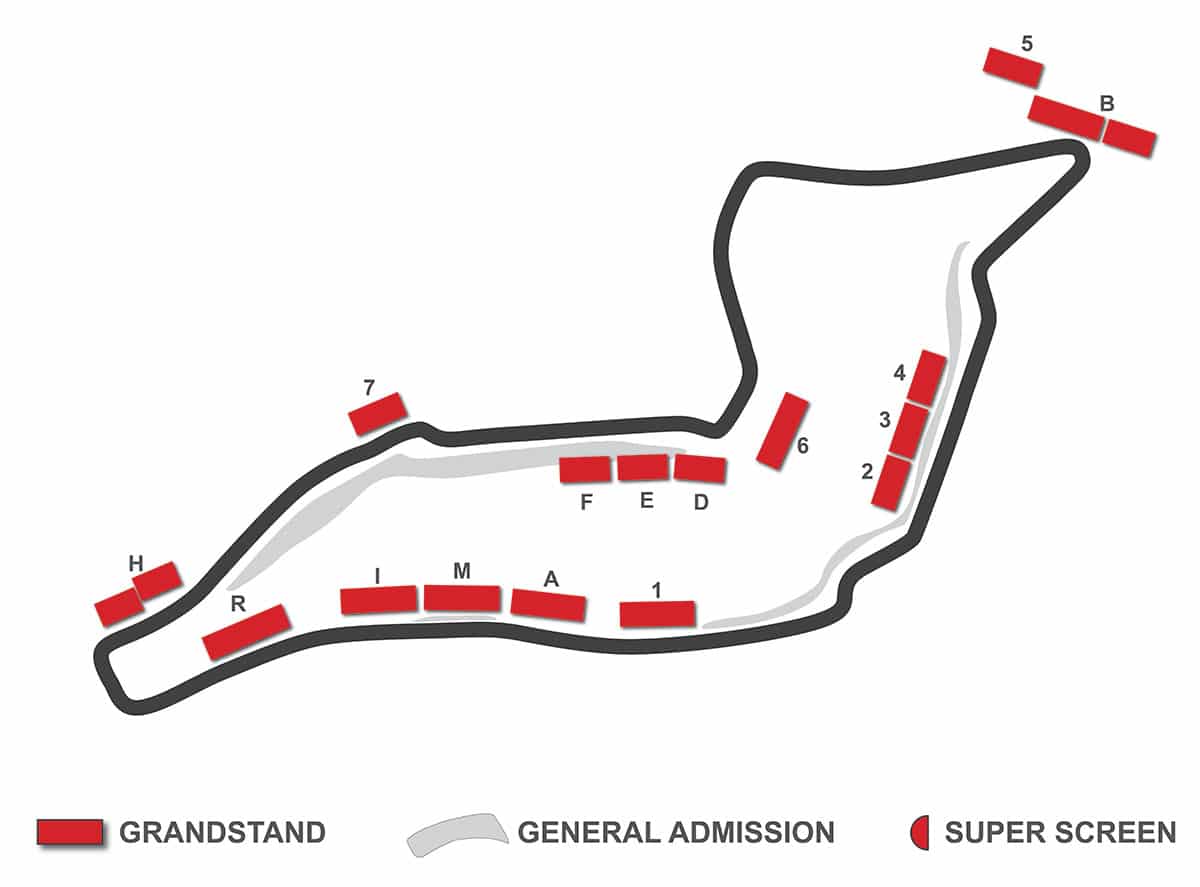
You are being transferred to Gootickets.com – my trusted ticket partner

- • Autodromo José Carlos Pace
- • Permanent track
- • São Paulo, Brazil
- • Google Maps / Google Earth
- • Web site
- • 40 Grands Prix - With a Safety Car (since 1993): 50%
- • The statistics

- Grands Prix
- Constructors
- Skip to primary navigation
- Skip to main content
GP Racing Stats
Interlagos F1 stats
Circuit info.
Official name
Autodromo Jose Carlos Pace
1973 Brazilian Grand Prix
2023 Sao Paulo Grand Prix
Most wins (driver)
Michael Schumacher (4)
Most wins (constructor)
Ferrari (9)
Quick links
Find race results, starting grids, qualifying results (from 1990 onwards) , post-race championship standings, and milestones for every race held at Interlagos.
Wins by grid position
Below are the grid positions of every race winner at Interlagos and the number of wins per position.
For more information see Interlagos race winners .
Maiden wins
The following drivers won their first F1 race at Interlagos.
Title deciders
Interlagos has hosted the following championship title deciders:
Drivers’ title
- 2005 : Fernando Alonso (1st title)
- 2006 : Fernando Alonso (2nd title)
- 2007 : Kimi Raikkonen (1st title)
- 2008 : Lewis Hamilton (1st title)
- 2009 : Jenson Button (1st title)
- 2012 : Sebastian Vettel (3rd title)
Constructors’ title
- 2006 : Renault (2nd title)
- 2008 : Ferrari (16th title)
- 2009 : Brawn GP (1st title)
- 2010 : Red Bull (1st title)
- 2018 : Mercedes (5th title)

- New comments
- Search media
Follow along with the video below to see how to install our site as a web app on your home screen.
Note: This feature may not be available in some browsers.
- Premium Members
- Click here to find the latest Fanatec products and deals
- Click here to find the latest MOZA products and deals
- Click here to buy any Asetek Simsports products with 5% discount using our code: overtakegg
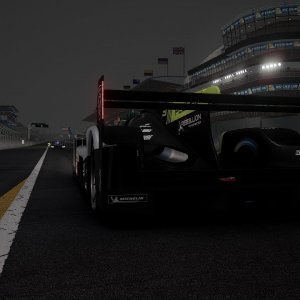
Interlagos Track Review For RaceRoom Racing Experience!
- Jun 10, 2022
- Tags autódromo josé carlos pace interlagos raceroom raceroom racing experience
Media information
Share this media, latest news.
- Thomas Harrison-Lord
- Updated: Today at 15:19
- Updated: Today at 14:10
- Updated: Today at 13:10
- Updated: Today at 13:00
- Updated: Yesterday at 16:16
- Updated: Yesterday at 15:17
- Connor Minniss
- Updated: Yesterday at 14:04
Are you buying car setups?
Moscow Metro Tour
- Page active

Description
Moscow metro private tours.
- 2-hour tour $87: 10 Must-See Moscow Metro stations with hotel pick-up and drop-off
- 3-hour tour $137: 20 Must-See Moscow Metro stations with Russian lunch in beautifully-decorated Metro Diner + hotel pick-up and drop off.
- Metro pass is included in the price of both tours.
Highlight of Metro Tour
- Visit 10 must-see stations of Moscow metro on 2-hr tour and 20 Metro stations on 3-hr tour, including grand Komsomolskaya station with its distinctive Baroque décor, aristocratic Mayakovskaya station with Soviet mosaics, legendary Revolution Square station with 72 bronze sculptures and more!
- Explore Museum of Moscow Metro and learn a ton of technical and historical facts;
- Listen to the secrets about the Metro-2, a secret line supposedly used by the government and KGB;
- Experience a selection of most striking features of Moscow Metro hidden from most tourists and even locals;
- Discover the underground treasure of Russian Soviet past – from mosaics to bronzes, paintings, marble arches, stained glass and even paleontological elements;
- Learn fun stories and myths about Coffee Ring, Zodiac signs of Moscow Metro and more;
- Admire Soviet-era architecture of pre- and post- World War II perious;
- Enjoy panoramic views of Sparrow Hills from Luzhniki Metro Bridge – MetroMost, the only station of Moscow Metro located over water and the highest station above ground level;
- If lucky, catch a unique «Aquarelle Train» – a wheeled picture gallery, brightly painted with images of peony, chrysanthemums, daisies, sunflowers and each car unit is unique;
- Become an expert at navigating the legendary Moscow Metro system;
- Have fun time with a very friendly local;
- + Atmospheric Metro lunch in Moscow’s the only Metro Diner (included in a 3-hr tour)
Hotel Pick-up
Metro stations:.
Komsomolskaya
Novoslobodskaya
Prospekt Mira
Belorusskaya
Mayakovskaya
Novokuznetskaya
Revolution Square
Sparrow Hills
+ for 3-hour tour
Victory Park
Slavic Boulevard
Vystavochnaya
Dostoevskaya
Elektrozavodskaya
Partizanskaya
Museum of Moscow Metro
- Drop-off at your hotel, Novodevichy Convent, Sparrow Hills or any place you wish
- + Russian lunch in Metro Diner with artistic metro-style interior for 3-hour tour
Fun facts from our Moscow Metro Tours:
From the very first days of its existence, the Moscow Metro was the object of civil defense, used as a bomb shelter, and designed as a defense for a possible attack on the Soviet Union.
At a depth of 50 to 120 meters lies the second, the coded system of Metro-2 of Moscow subway, which is equipped with everything you need, from food storage to the nuclear button.
According to some sources, the total length of Metro-2 reaches over 150 kilometers.
The Museum was opened on Sportivnaya metro station on November 6, 1967. It features the most interesting models of trains and stations.
Coffee Ring
The first scheme of Moscow Metro looked like a bunch of separate lines. Listen to a myth about Joseph Stalin and the main brown line of Moscow Metro.
Zodiac Metro
According to some astrologers, each of the 12 stops of the Moscow Ring Line corresponds to a particular sign of the zodiac and divides the city into astrological sector.
Astrologers believe that being in a particular zadiac sector of Moscow for a long time, you attract certain energy and events into your life.
Paleontological finds
Red marble walls of some of the Metro stations hide in themselves petrified inhabitants of ancient seas. Try and find some!
- Every day each car in Moscow metro passes more than 600 km, which is the distance from Moscow to St. Petersburg.
- Moscow subway system is the 5th in the intensity of use (after the subways of Beijing, Tokyo, Seoul and Shanghai).
- The interval in the movement of trains in rush hour is 90 seconds .
What you get:
- + A friend in Moscow.
- + Private & customized Moscow tour.
- + An exciting pastime, not just boring history lessons.
- + An authentic experience of local life.
- + Flexibility during the walking tour: changes can be made at any time to suit individual preferences.
- + Amazing deals for breakfast, lunch, and dinner in the very best cafes & restaurants. Discounts on weekdays (Mon-Fri).
- + A photo session amongst spectacular Moscow scenery that can be treasured for a lifetime.
- + Good value for souvenirs, taxis, and hotels.
- + Expert advice on what to do, where to go, and how to make the most of your time in Moscow.
Write your review
- Preplanned tours
- Daytrips out of Moscow
- Themed tours
- Customized tours
- St. Petersburg

Moscow Metro 2019
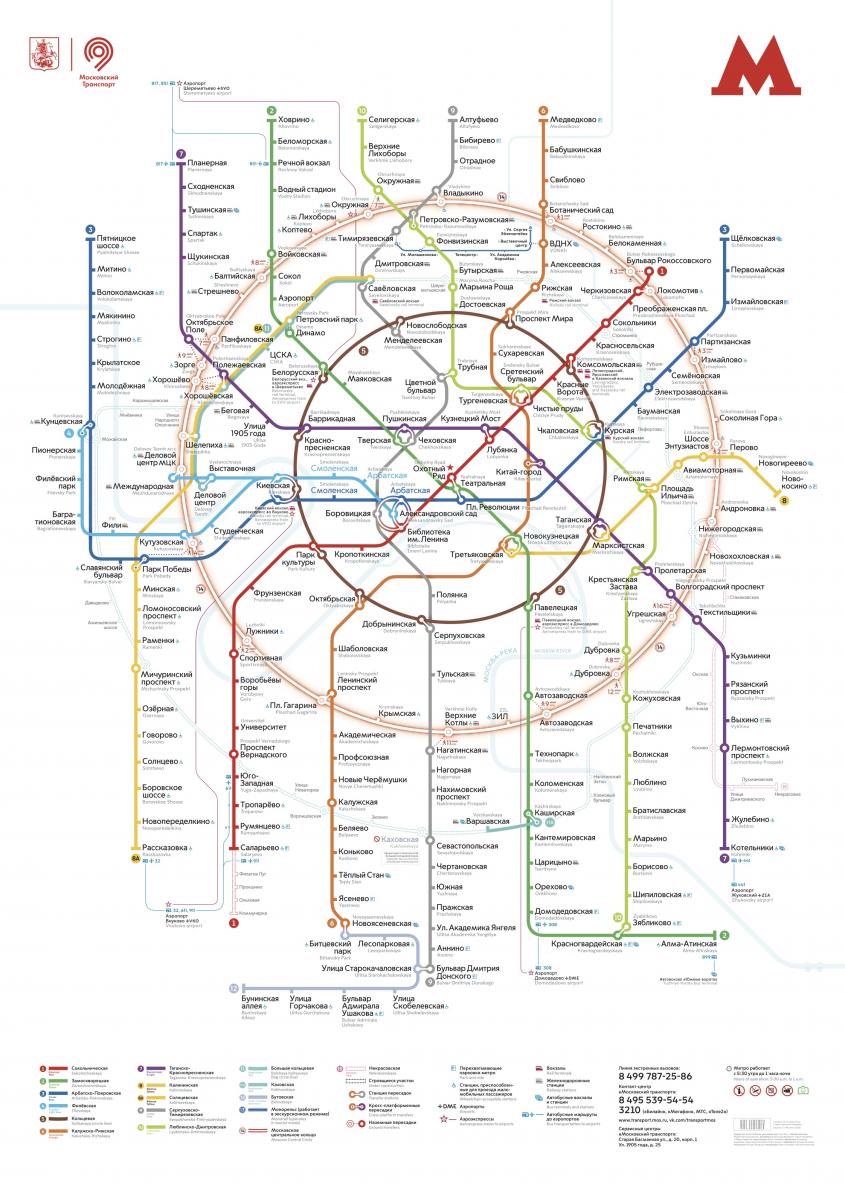
Will it be easy to find my way in the Moscow Metro? It is a question many visitors ask themselves before hitting the streets of the Russian capital. As metro is the main means of transport in Moscow – fast, reliable and safe – having some skills in using it will help make your visit more successful and smooth. On top of this, it is the most beautiful metro in the world !
. There are over 220 stations and 15 lines in the Moscow Metro. It is open from 6 am to 1 am. Trains come very frequently: during the rush hour you won't wait for more than 90 seconds! Distances between stations are quite long – 1,5 to 2 or even 3 kilometers. Metro runs inside the city borders only. To get to the airport you will need to take an onground train - Aeroexpress.
RATES AND TICKETS
Paper ticket A fee is fixed and does not depend on how far you go. There are tickets for a number of trips: 1, 2 or 60 trips; or for a number of days: 1, 3 days or a month. Your trips are recorded on a paper ticket. Ifyou buy a ticket for several trips you can share it with your traveling partner passing it from one to the other at the turnstile.
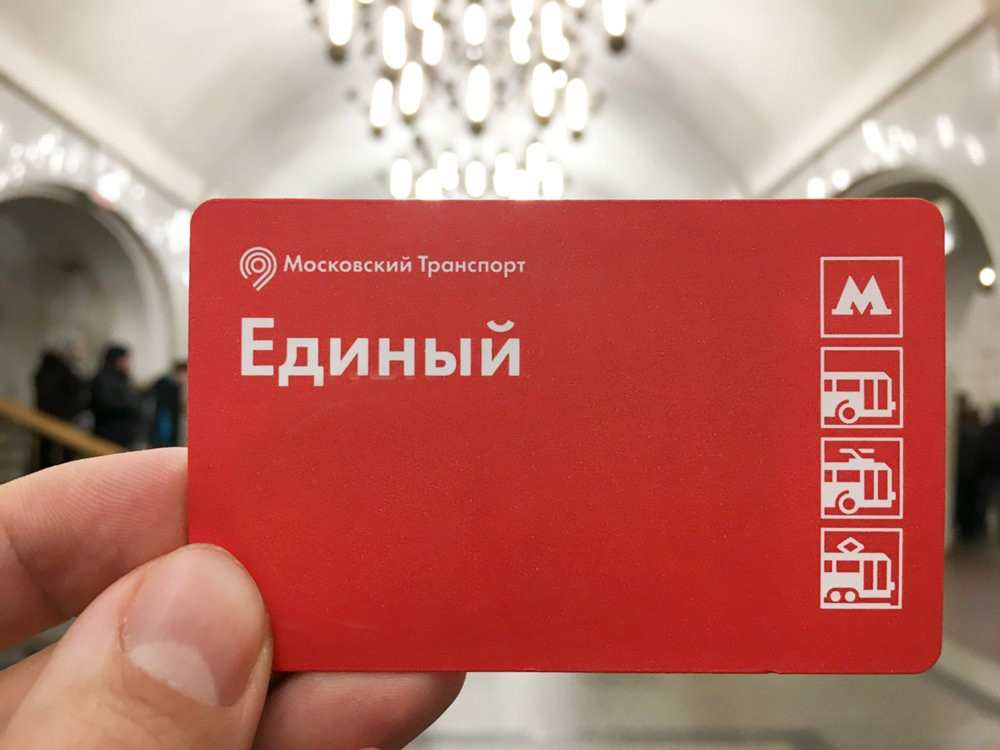
On every station there is cashier and machines (you can switch it to English). Cards and cash are accepted. 1 trip - 55 RUB 2 trips - 110 RUB
Tickets for 60 trips and day passes are available only at the cashier's.
60 rides - 1900 RUB
1 day - 230 RUB 3 days - 438 RUB 30 days - 2170 RUB.
The cheapest way to travel is buying Troyka card . It is a plastic card you can top up for any amount at the machine or at the ticket office. With it every trip costs 38 RUB in the metro and 21 RUB in a bus. You can get the card in any ticket office. Be prepared to leave a deposit of 50 RUB. You can get it back returning the card to the cashier.
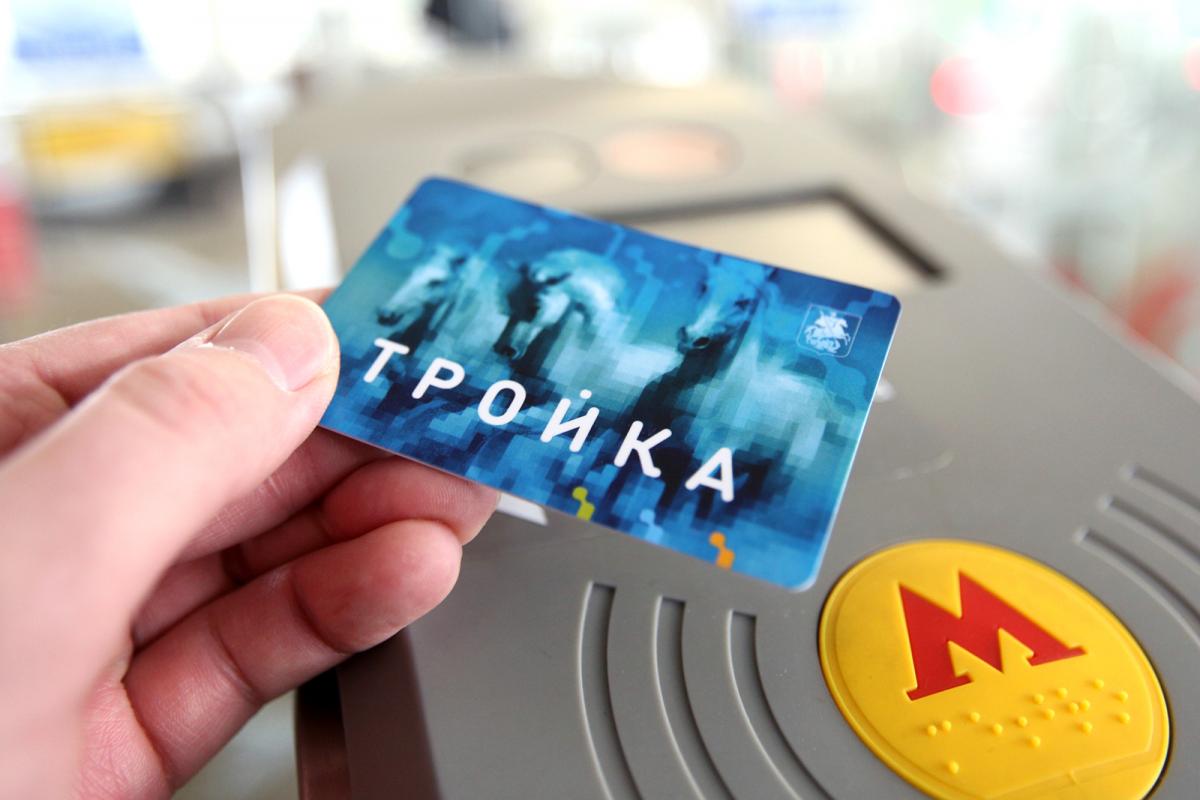
SamsungPay, ApplePay and PayPass cards.
One turnstile at every station accept PayPass and payments with phones. It has a sticker with the logos and located next to the security's cabin.
GETTING ORIENTED
At the platfrom you will see one of these signs.
It indicates the line you are at now (line 6), shows the direction train run and the final stations. Numbers below there are of those lines you can change from this line.
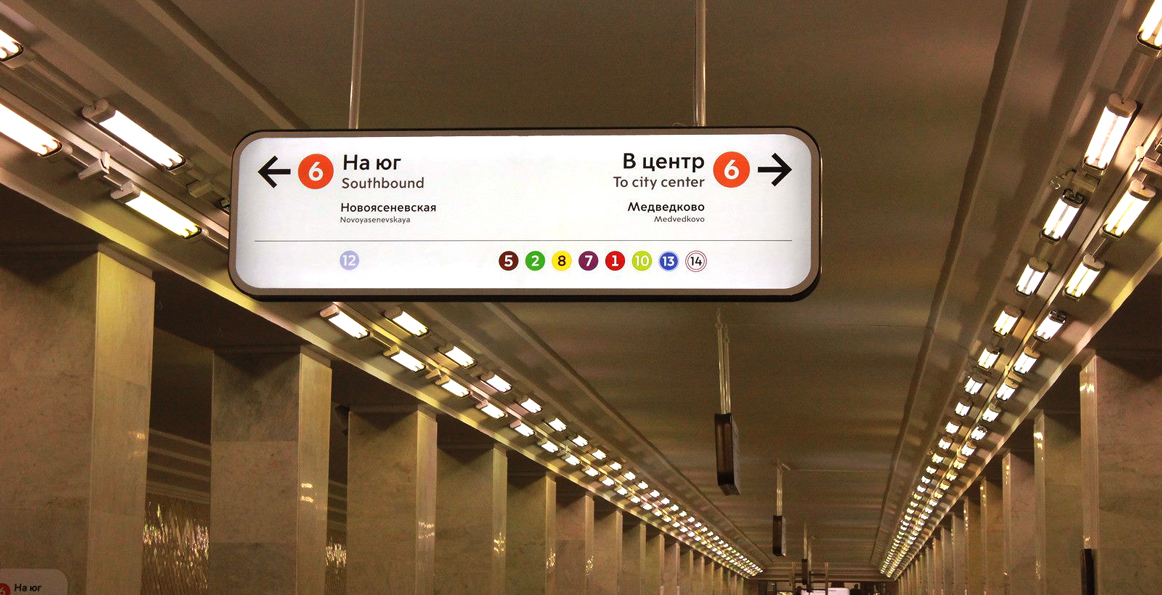
In trains, stations are announced in Russian and English. In newer trains there are also visual indication of there you are on the line.
To change lines look for these signs. This one shows the way to line 2.
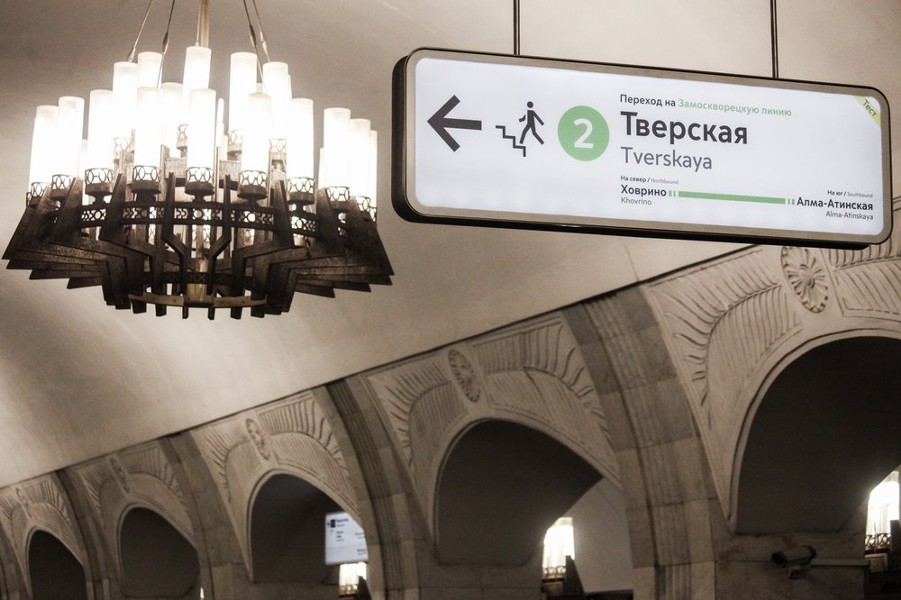
There are also signs on the platfrom. They will help you to havigate yourself. (To the lines 3 and 5 in this case).
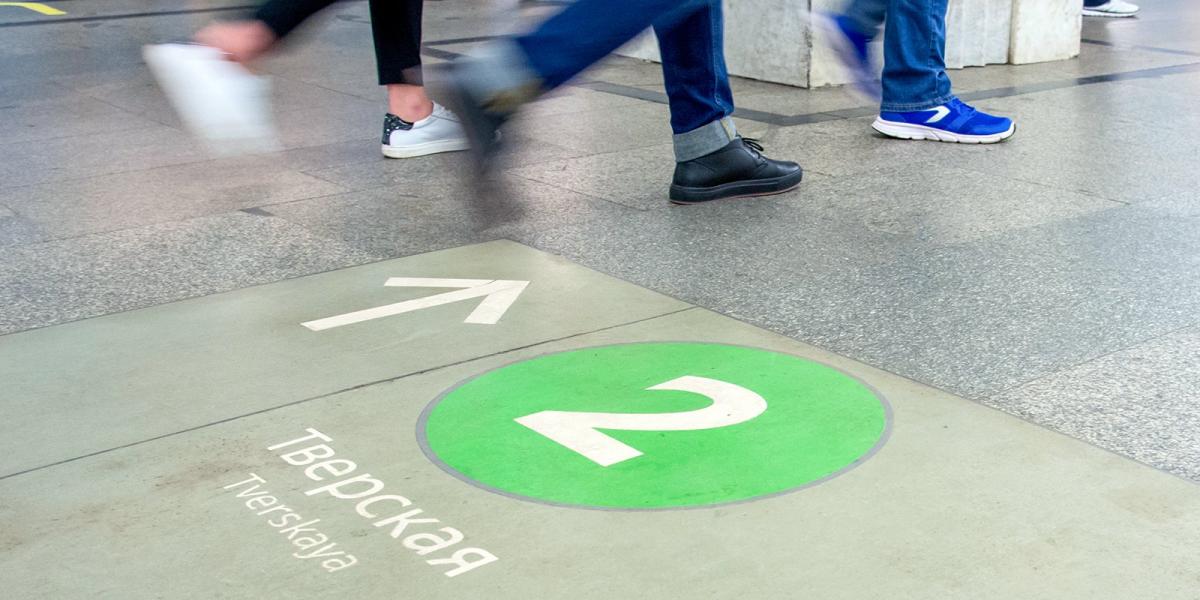
- FanNation FanNation FanNation
- Swimsuit SI Swimsuit SI Swimsuit
- Sportsbook SI Sportsbook SI Sportsbook
- Tickets SI Tickets SI Tickets
- Shop SI Shop SI Shop
- What's on TV
- Golf Golf Golf
- Home Home Home
- News News News
- Leaderboard Leaderboard Leaderboard
- Schedules Schedules Schedules
- SI Rankings SI Rankings SI Rankings
- Travel Travel Travel
- Instruction Instruction Instruction
- Gear Gear Gear
- Betting Betting Betting
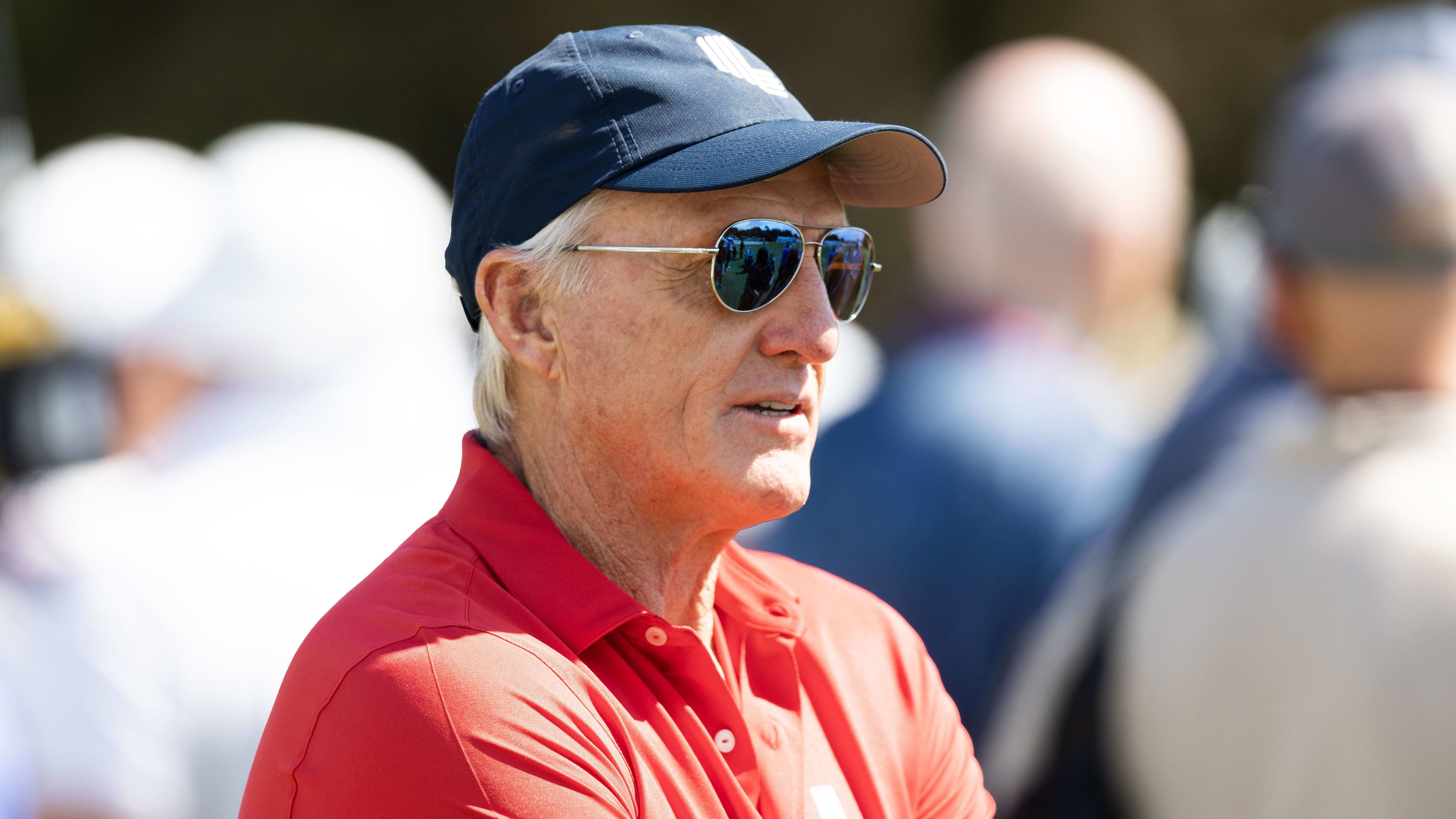
Greg Norman Says LIV Golf Is Open to Idea of 72-Hole Format
A major change could be coming to the circuit.
- Author: Kyle Koster
A major change to the format of LIV Golf could be coming based on comments made Wednesday by CEO Greg Norman. Speaking at a press conference ahead of this weekend's event in Austraila, Norman said that he is open-minded about going to 72-hole tournaments in the future. LIV Golf players currently compete over three days and 54 holes without a cut.
"It's a great conversation to have," Norman said. "We will continue to have that conversation going forward. But we sit back and say, what value do we get on putting on television on Thursday? How do we build out in the future? There are things that we sit back and look at to see what is the most optimal solution to make this a better and better and better event, and 72 holes is discussed."
Jon Rahm, who is perhaps the circuit's most marketable player, has been advocating for longer events in recent weeks.
"I think there’s a level of comfort when I say that because it’s a little bit more of what we’re used to seeing in golf,” Rahm said Wednesday . “I came to this realization and I think it could help a lot of fans’ trust in LIV a little bit more because that’s a lot of the complaints that I see from a lot of people."
Rahm and other players have been frustrated at their inability to accrue world ranking points, with the shorter tournament formats being a sticking point. In the end, though, money will have a lot to say in any decision.
“But at the end of the day, LIV is a business," Rahm added. "If it doesn’t fit the product, it doesn’t fit the product. I’m just a player.”
Latest News
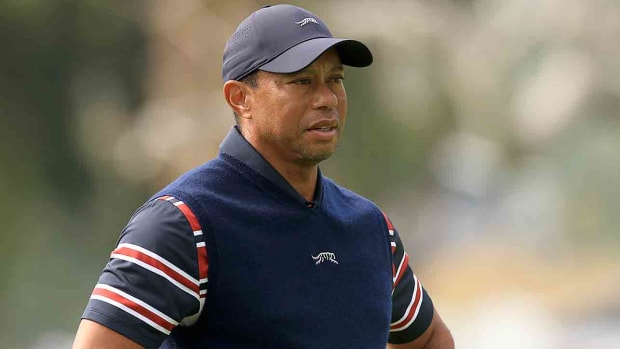
A ‘Very Engaged’ Tiger Woods Hosted PGA Tour/PIF Bahamas Meeting and Played Golf With Yasir Al-Rumayyan
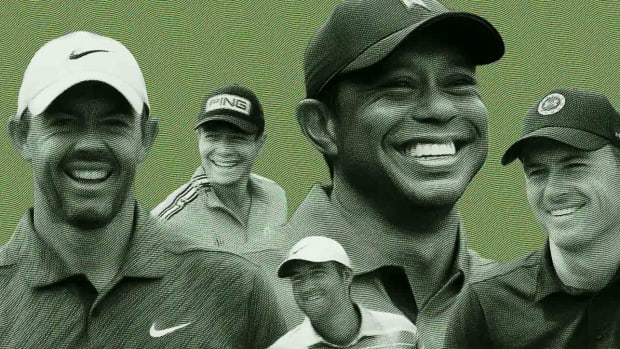
SI Golf Ranks Its Top 36 PGA Tour Players Who Should Get Equity Shares
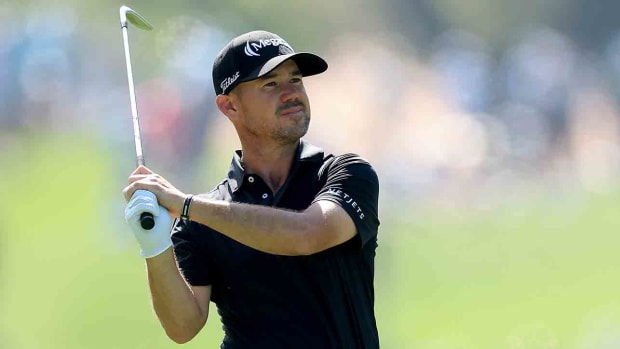
TV Times: How to Watch the Valspar Championship, LPGA in California
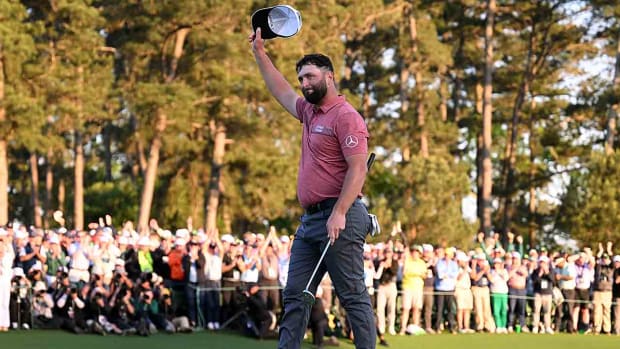
Masters Champion Jon Rahm Expects to Be Nervous Early in the Week, Then All Business at Augusta

Power Rankings: Take Precision Over Distance at Valspar Championship

COMMENTS
While each of our Brazilian Grand Prix Packages comes with a pre-defined grandstand ticket, we've created this Brazilian F1 Track guide to help you choose an alternative. INTERLAGOS CIRCUIT. KEY FACTS. Circuit Length - 4.31km. Number of Laps - 71. Race Distance - 305.87km. Max Speed - 339km/h. BRAZIL.
Racing continued at a national level throughout the 1940s and, by 1947, Interlagos was ready to host its first international race, an event for Grand Prix cars. Sanson's company managed the circuit until 1954, when it was sold to the City of São Paulo for a symbolic price. In 1957, a link road was built to connect the Turn 4 and Junção ...
Your Grand Prix Package includes your F1 Brazil tickets, return transfers to the Interlagos Circuit (for race and qualifying), return flights the airport of your choice (plus transfers), and 4 nights hotel accommodation in the stunning city of Sao Paolo. For those that want to extend their stay, additional nights are available on request.
Interlagos is truly unique and winning there is a remarkable feat. The track rose to international fame in the 1970s. After essential works were completed to adequate the then 7.960 metres to fast single-seater races, Interlagos saw the rise of Brazil's first F1 world champion, Emerson Fittipaldi. It was there that Emerson won, in 1970, the ...
Interlagos Circuit. / 23.70111°S 46.69722°W / -23.70111; -46.69722. The Autódromo José Carlos Pace, better known as Autódromo de Interlagos or simply Interlagos, is a 4.309 km (2.677 mi) motorsport circuit located in the city of São Paulo, Brazil. It was inaugurated on 12 May 1940, by the federal intervener of the São Paulo ...
The Interlagos circuit is just 4.309 kilometers long. Among the current F1 circuits, only Monaco is shorter, but the Brazilian track is much faster. Interlagos is currently the only circuit in South America to host a Formula 1 Grand Prix. In the past, Argentina has been the other South American country to host an F1 Grand Prix.
Where to watch the action at Interlagos. The 2024 São Paulo Grand Prix takes place from November 1-3. Tickets are now on sale. Currently available are seats in the A, B, D, H grandstands. 3-day ticket prices start from $400 USD. Official Ticket Packages from F1 Experiences are also available.
F1 ® Interlagos 2024 Access. Being the third Grand Prix ™ of the Americas triple header, the atmosphere is at an all-time high at Interlagos Circuit during the Grand Prix ™ weekend. With its carnival-like flare, Interlagos is known for its passionate fans, sweeping corners, large grandstands and it's pivotal F1 ® history.
FORMULA 1 HEINEKEN GRANDE PRÊMIO DE SÃO PAULO 2022. Autódromo José Carlos Pace. First Grand Prix. 1973. Number of Laps. 71. Circuit Length. 4.292 km. Race Distance.
Interlagos circuit. With 40 years of history and numerous memorable highlights, the home of the Brazilian Grand Prix is a special place for many Formula 1 fans. Although the circuit is known as Interlagos - which literally means 'between two lakes' - it is officially called the Autodromo José Carlos Pace, in honour of Brazilian driver Carlos Pace, who won the Grand Prix here in 1975 ...
Gate Opening Times: The circuit gates open at 08:00 on Friday, Saturday and Sunday. Gates close at 16:00 on Friday and Saturday, and 14:00 on Sunday. There are no pass outs. Seven gates provide entry at Interlagos. Check the interactive map with gate locations.
4. Mercedes. 42. 5. Aston Martin. 33. View More. An F1 track guide to the Interlagos circuit in Sao Paulo, the home of the 2022 F1 Brazilian Grand Prix. Includes a corner-by-corner analysis together with dates and start times for all the sessions, together with details of previous winners of the race and current lap record.
Michael Schumacher (4) The Interlagos track is situated nine miles from the city centre of Sao Paulo. The neighbourhood had originally been plotting a racing circuit back in the 1920s, but this didn't come to fruition for quite some time. Brazil's history with motor racing began in 1934, with races on the Gavea circuit in Rio de Janeiro.
Interlagos was built in 1938 - the designers took inspiration from three other popular tracks: Roosevelt Raceway in the USA, Montlhery in France and the iconic Brooklands in the UK. The track boasts banked corners and the famous Senna S, it has a length of 4.309km and this year the race will be 71 laps long. Now you know the facts, let's go ...
The Azerbaijan Grand Prix Circuit: A Tour of High Speed and Precision; The Bahrain Grand Prix. Sakhir GP: The Ultimate Corner-by-Corner Analysis; ... The current lap record for the Interlagos circuit is 1:10.540, set by Valtteri Bottas in a Mercedes in 2018. The fastest pole position time is 1:07.281, set by Lewis Hamilton in a Mercedes in 2018
Interlagos Shopping Mall Express Av. Interlagos 2.255; Congonhas Airport Express Congonhas Airport; Buses leave when full and run from 6am to 1pm going to the circuit and from 3pm to 5pm returning. Tickets cost R$38 for a round trip or R$27 one way, and can be purchased on the day at the point of departure. Taxi and Uber
The Mergulho ramp that leads down to the pit straight is as steep as the Eau Rouge ravine at Spa. As the condition of the track deteriorated over the years, Interlagos was abandoned in favour of Jacarepagua. F1 made its return there in 1990. The length of the track was halved, and the downhill "S do Senna" (named after the driver's death ...
View F1 statistics for the Interlagos circuit, including a list of winners and polesitters. Also find race results for every race. Skip to primary navigation ... (from 1990 onwards), post-race championship standings, and milestones for every race held at Interlagos. # Date Grand Prix Result; 1: 11 February 1973: Brazil: Result: 2: 27 January ...
Phil Rose. Jun 10, 2022. autódromo josé carlos pace interlagos raceroom raceroom racing experience. We take a look at the brand new Interlagos circuit for RaceRoom including a virtual tour of the circuit! There are no comments to display.
Moscow Metro. The Moscow Metro Tour is included in most guided tours' itineraries. Opened in 1935, under Stalin's regime, the metro was not only meant to solve transport problems, but also was hailed as "a people's palace". Every station you will see during your Moscow metro tour looks like a palace room. There are bright paintings ...
Moscow Metro private tours. 2-hour tour $87: 10 Must-See Moscow Metro stations with hotel pick-up and drop-off. 3-hour tour $137: 20 Must-See Moscow Metro stations with Russian lunch in beautifully-decorated Metro Diner + hotel pick-up and drop off. Metro pass is included in the price of both tours.
Customized tours; St. Petersburg; SMS: +7 (906) 077-08-68 [email protected]. Moscow Metro 2019. Will it be easy to find my way in the Moscow Metro? It is a question many visitors ask themselves before hitting the streets of the Russian capital. As metro is the main means of transport in Moscow - fast, reliable and safe - having some ...
Moscow has some of the most well-decorated metro stations in the world but visitors don't always know which are the best to see. This guided tour takes you to the city's most opulent stations, decorated in styles ranging from neoclassicism to art deco and featuring chandeliers and frescoes, and also provides a history of (and guidance on how to use) the Moscow metro system.
A major change to the format of LIV Golf could be coming based on comments made Wednesday by CEO Greg Norman. Speaking at a press conference ahead of this weekend's event in Austraila, Norman said ...